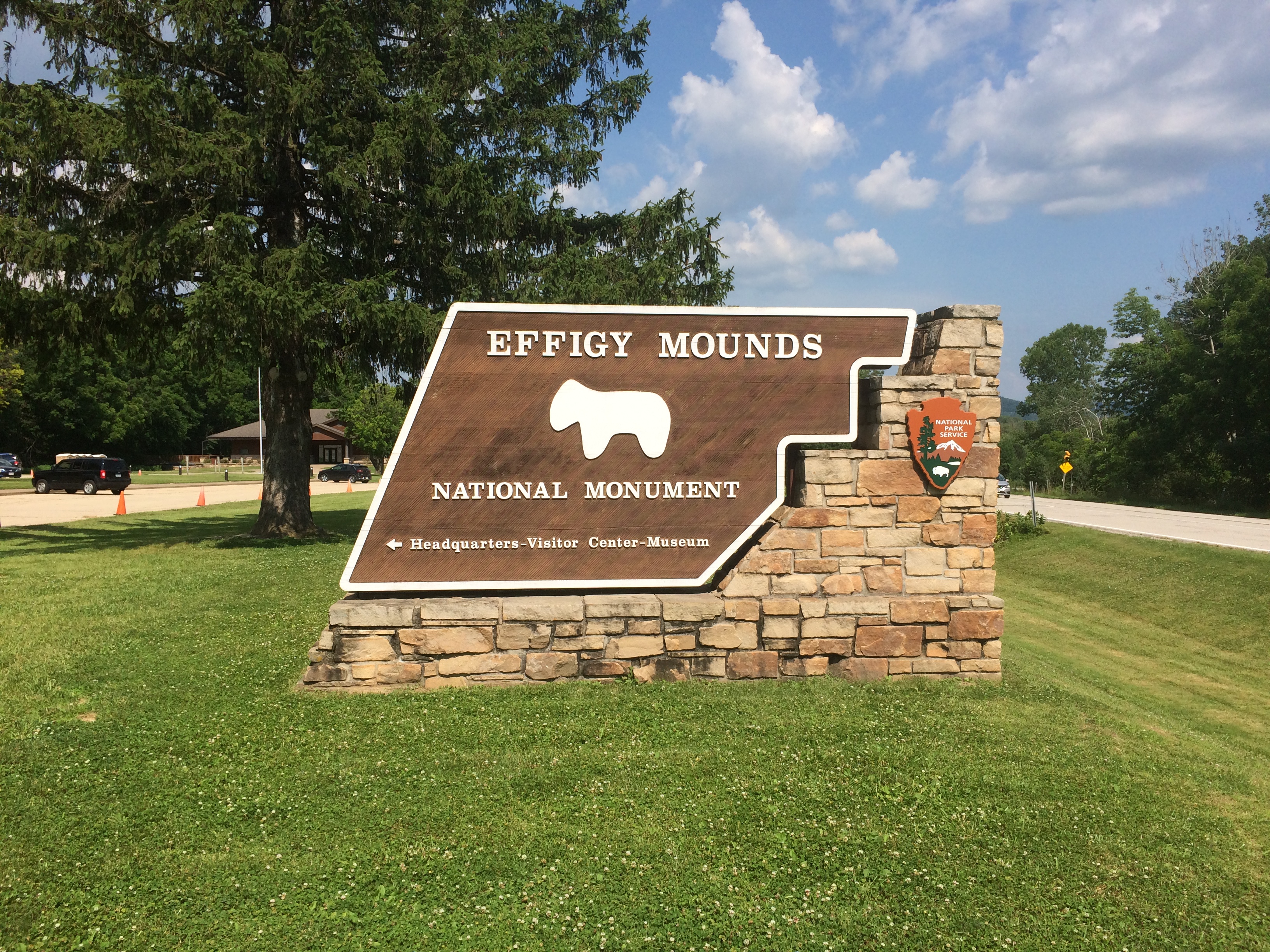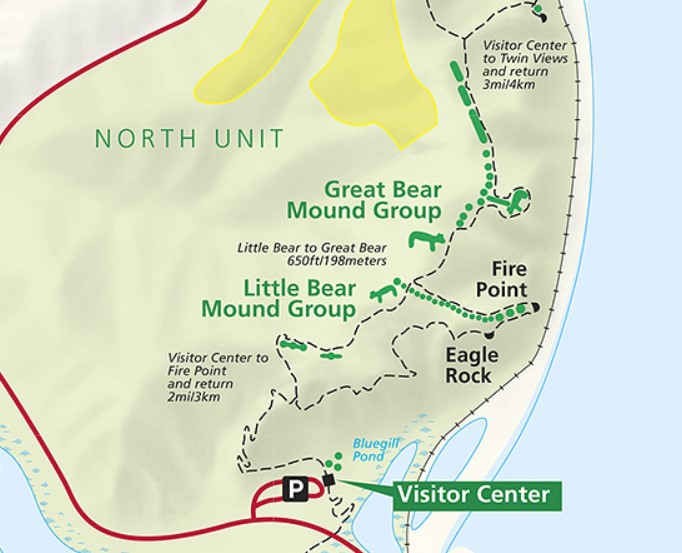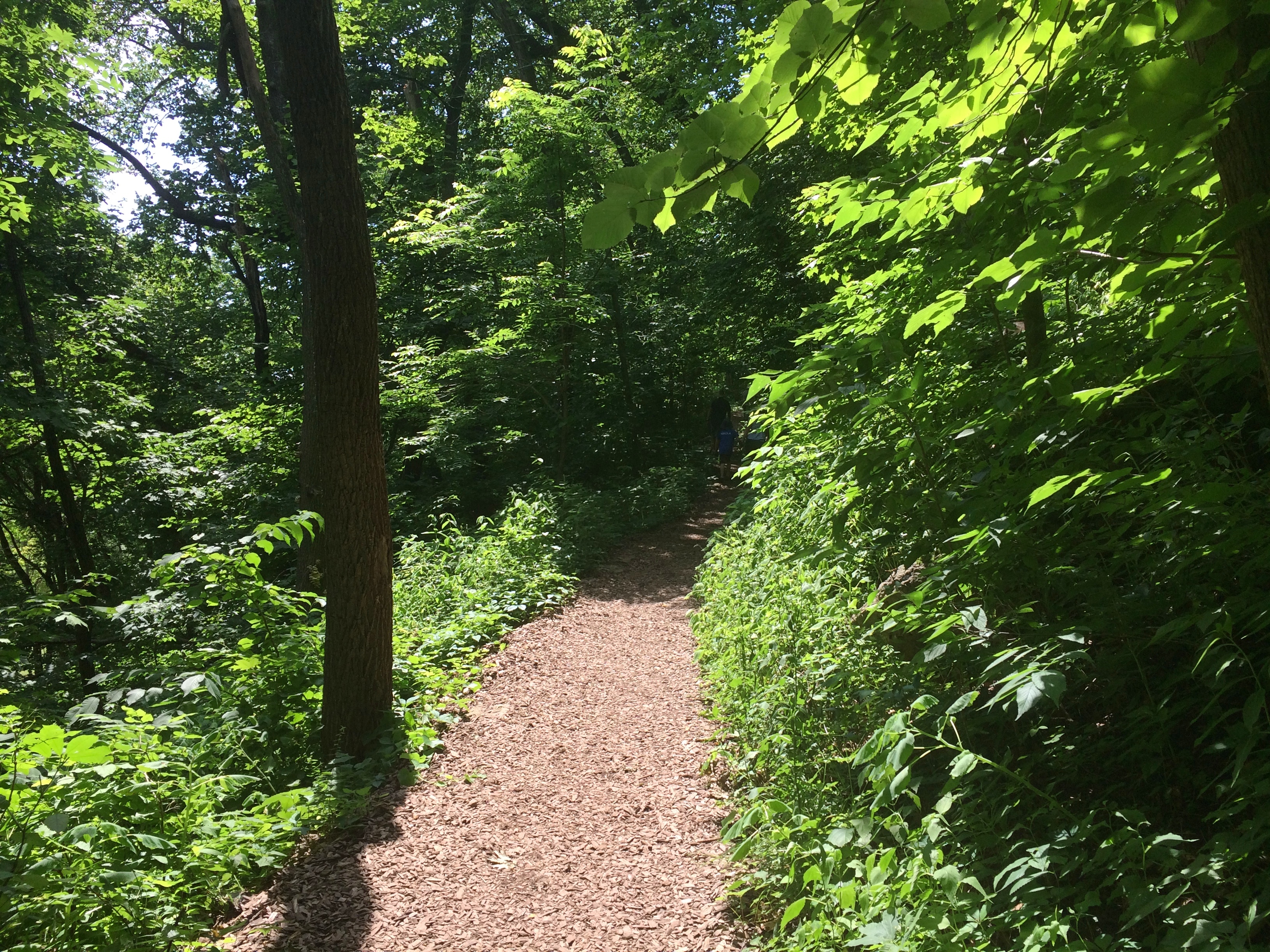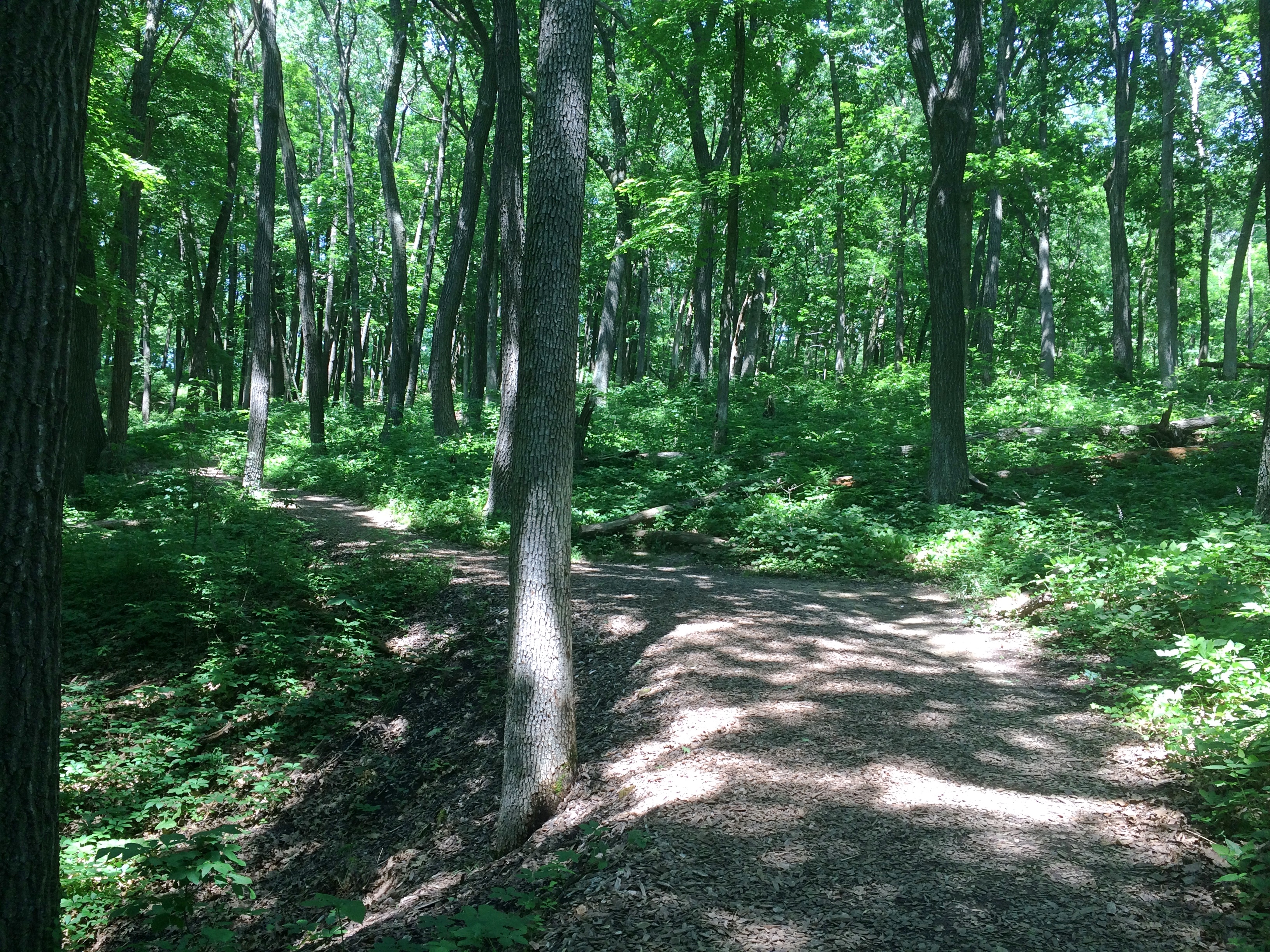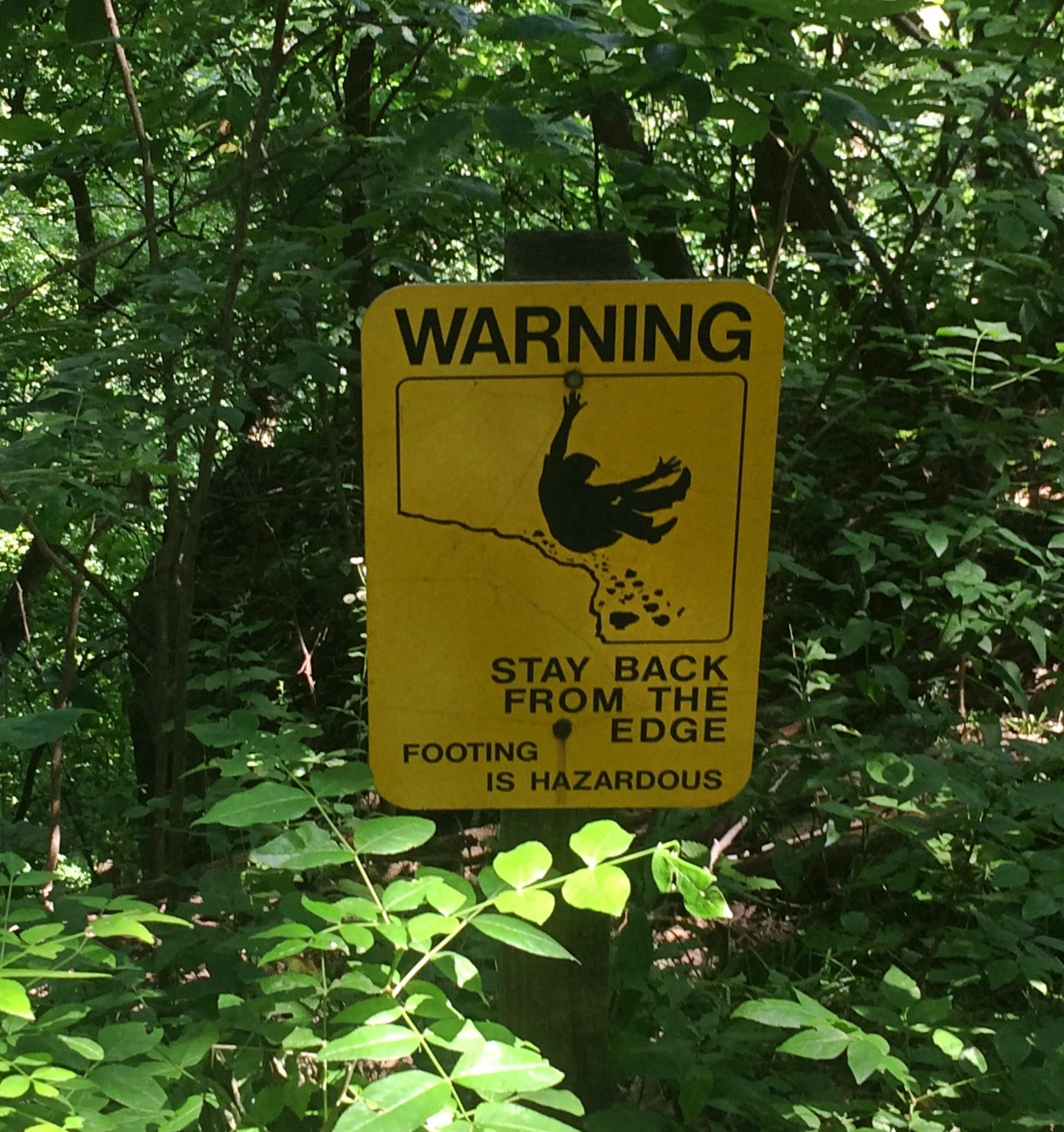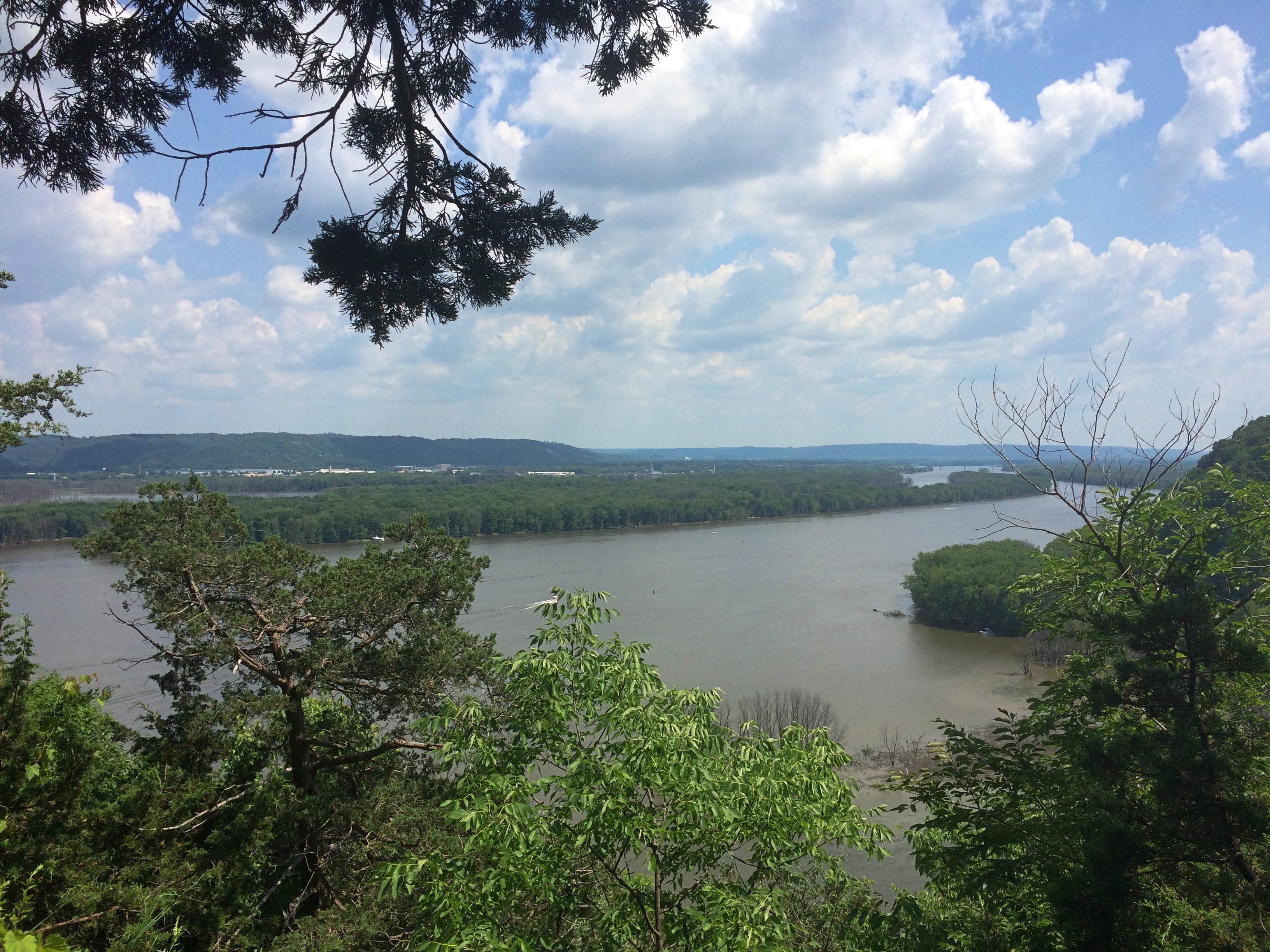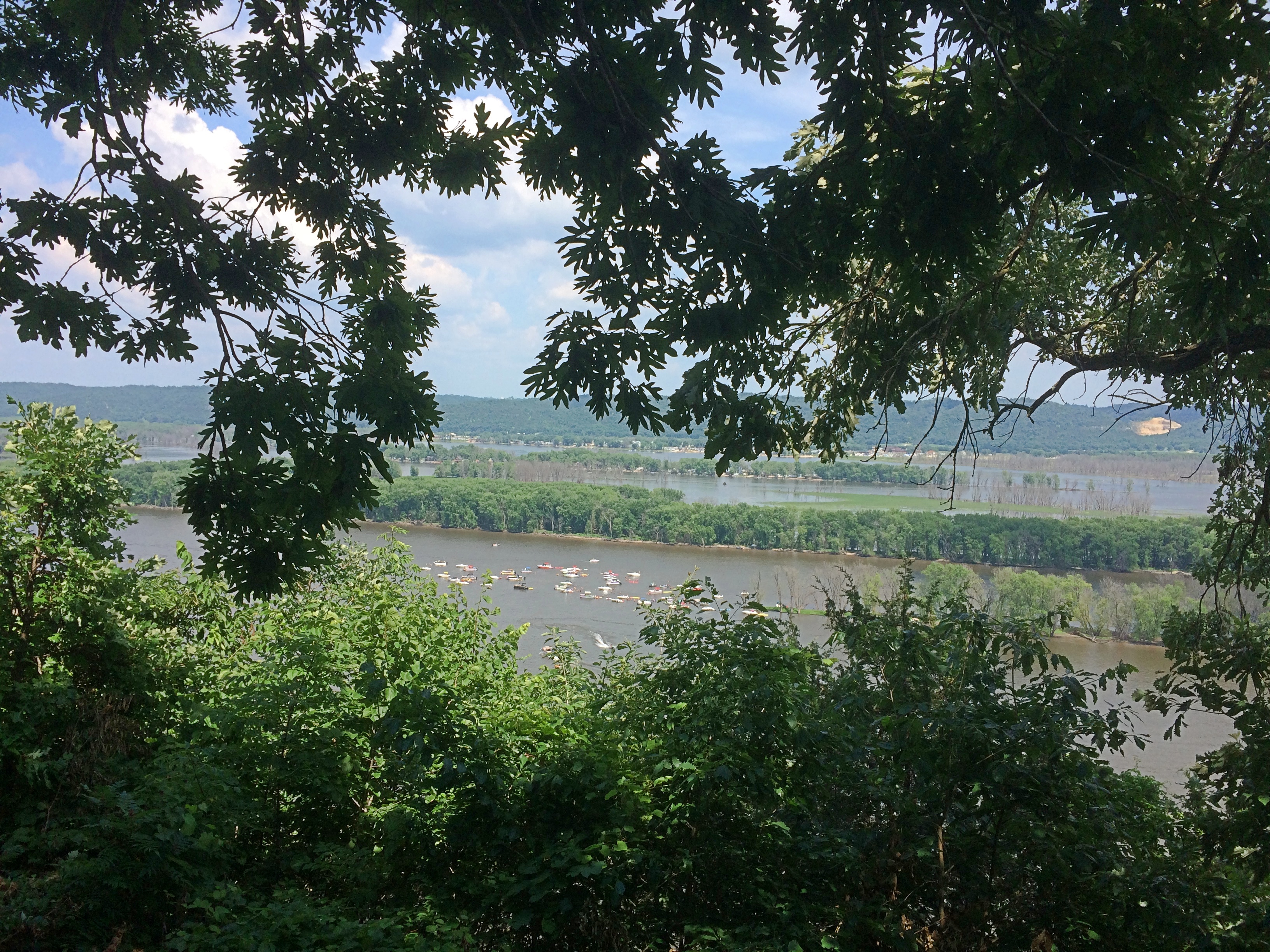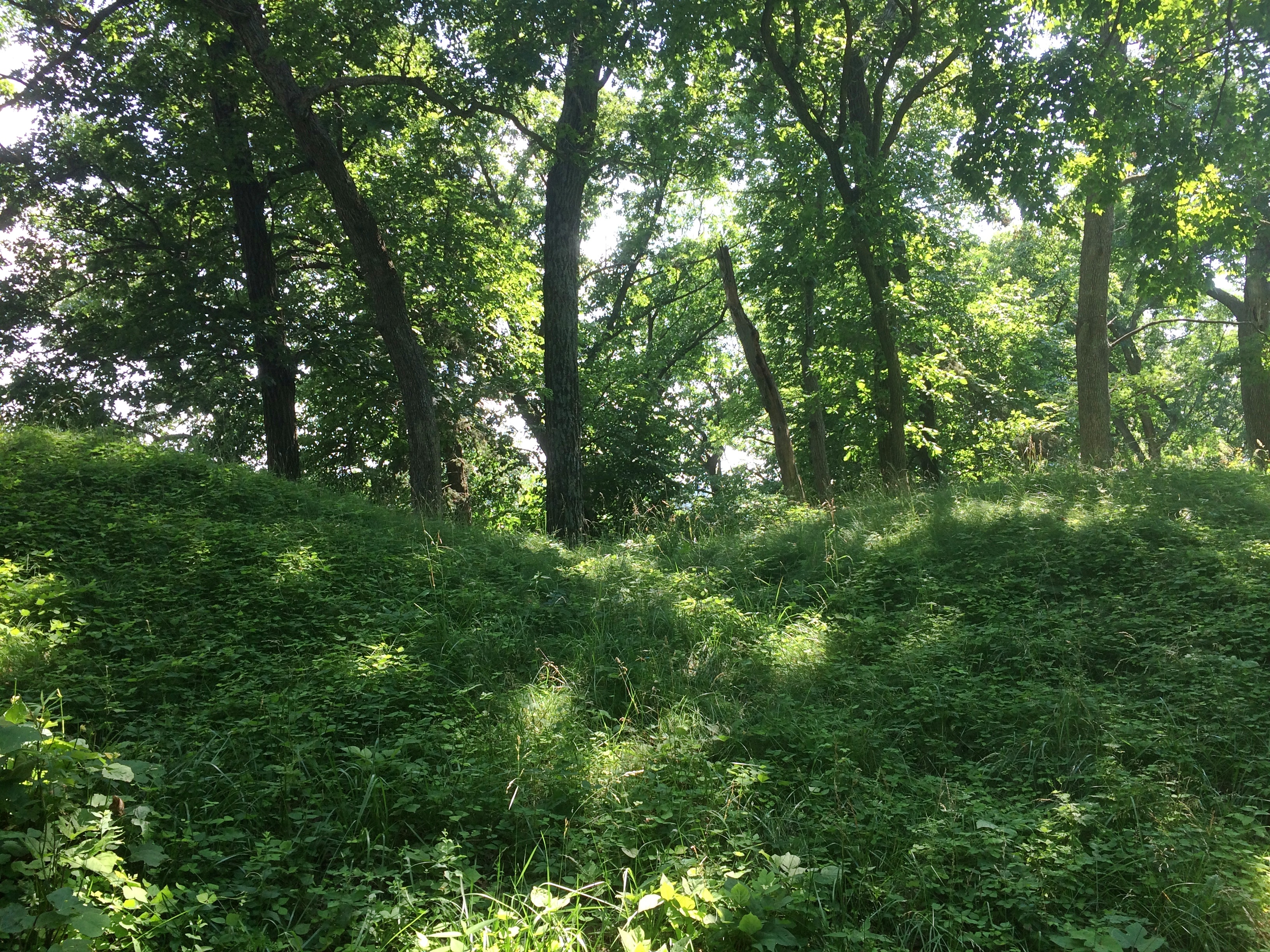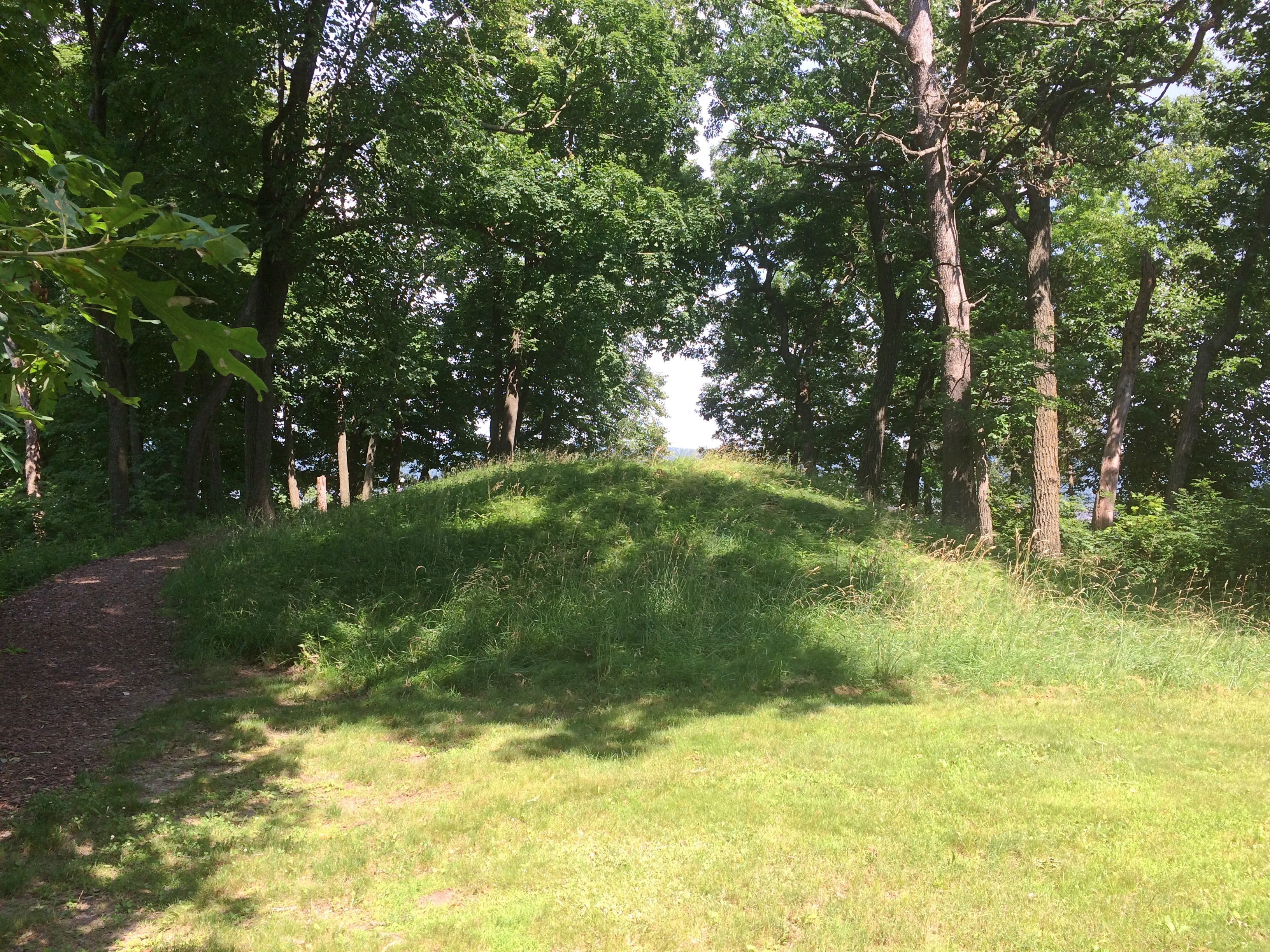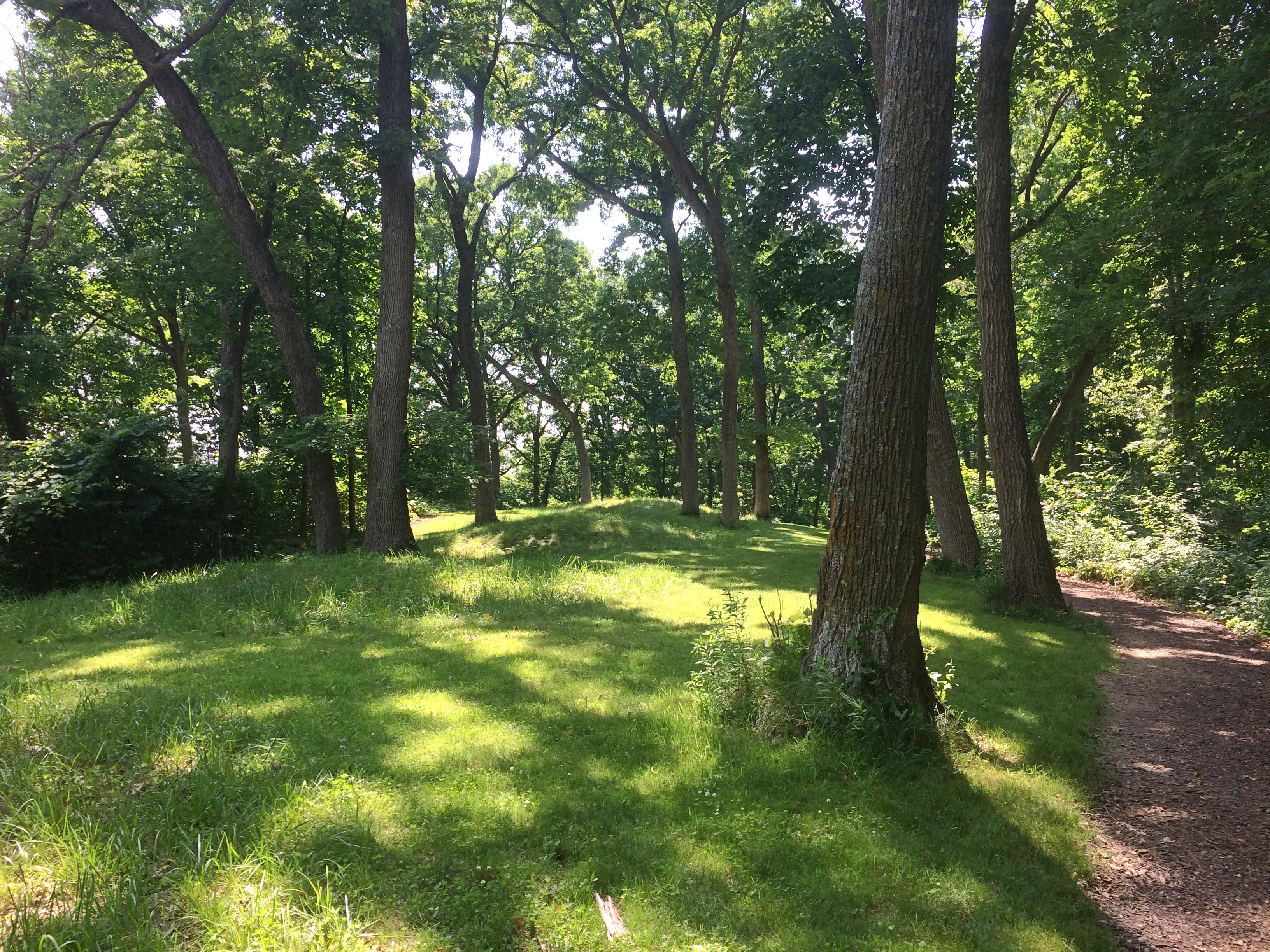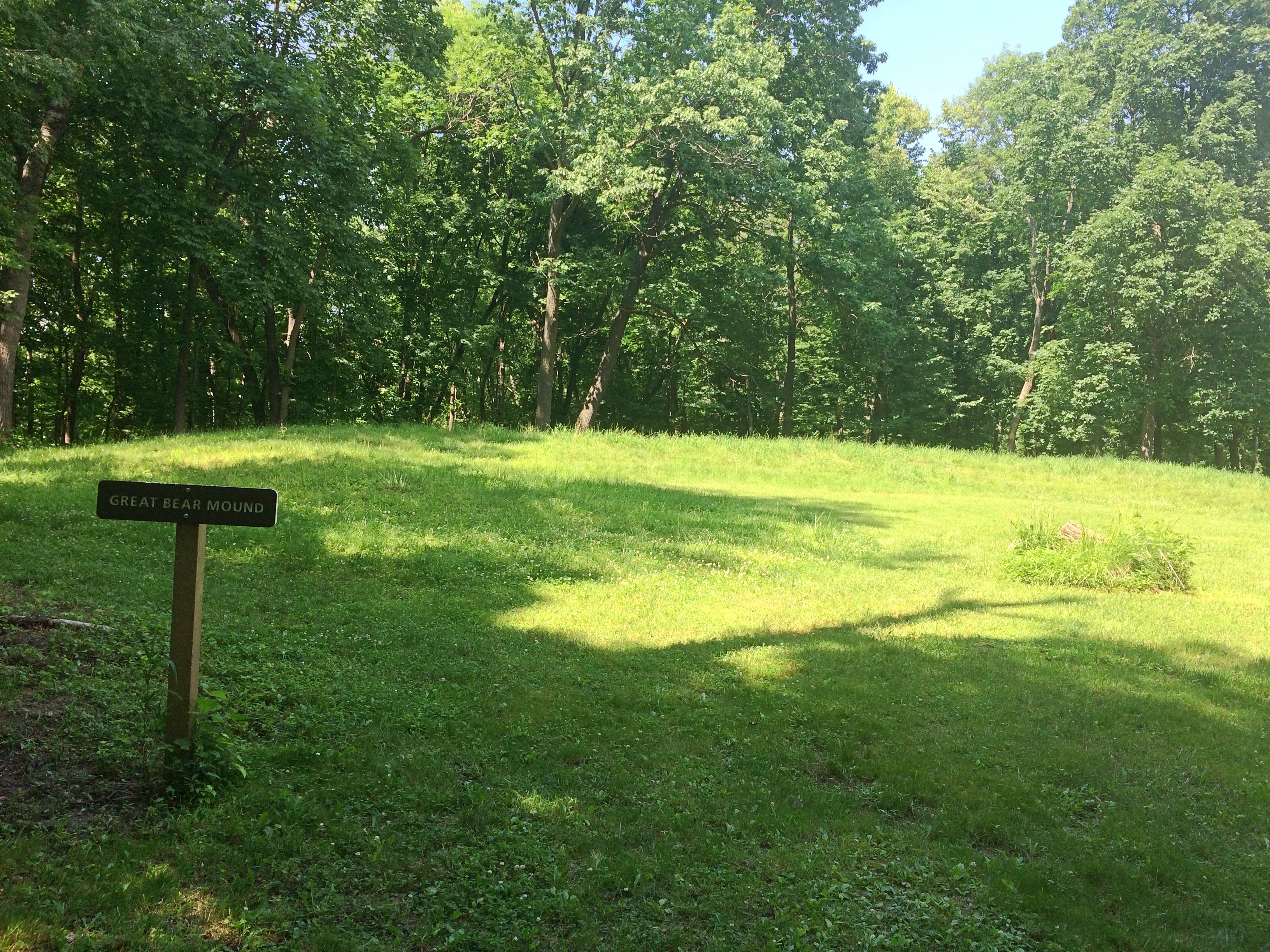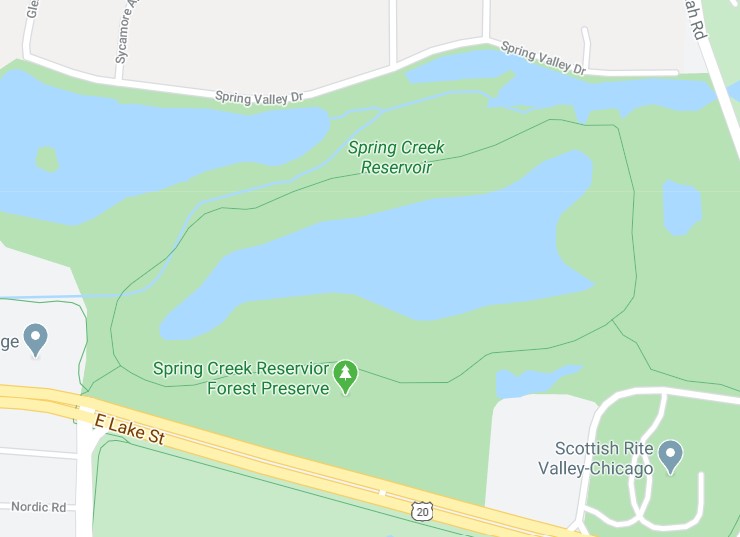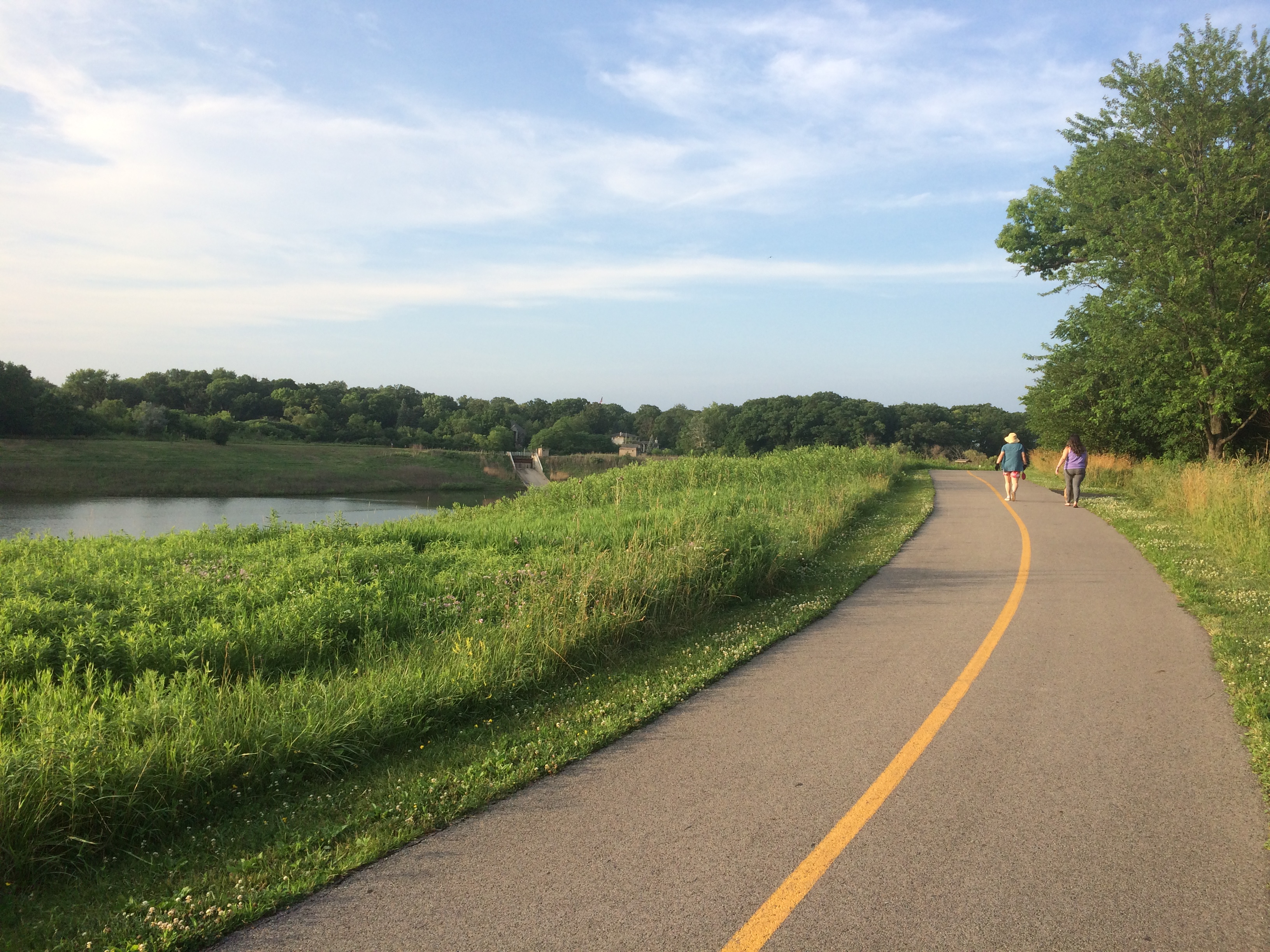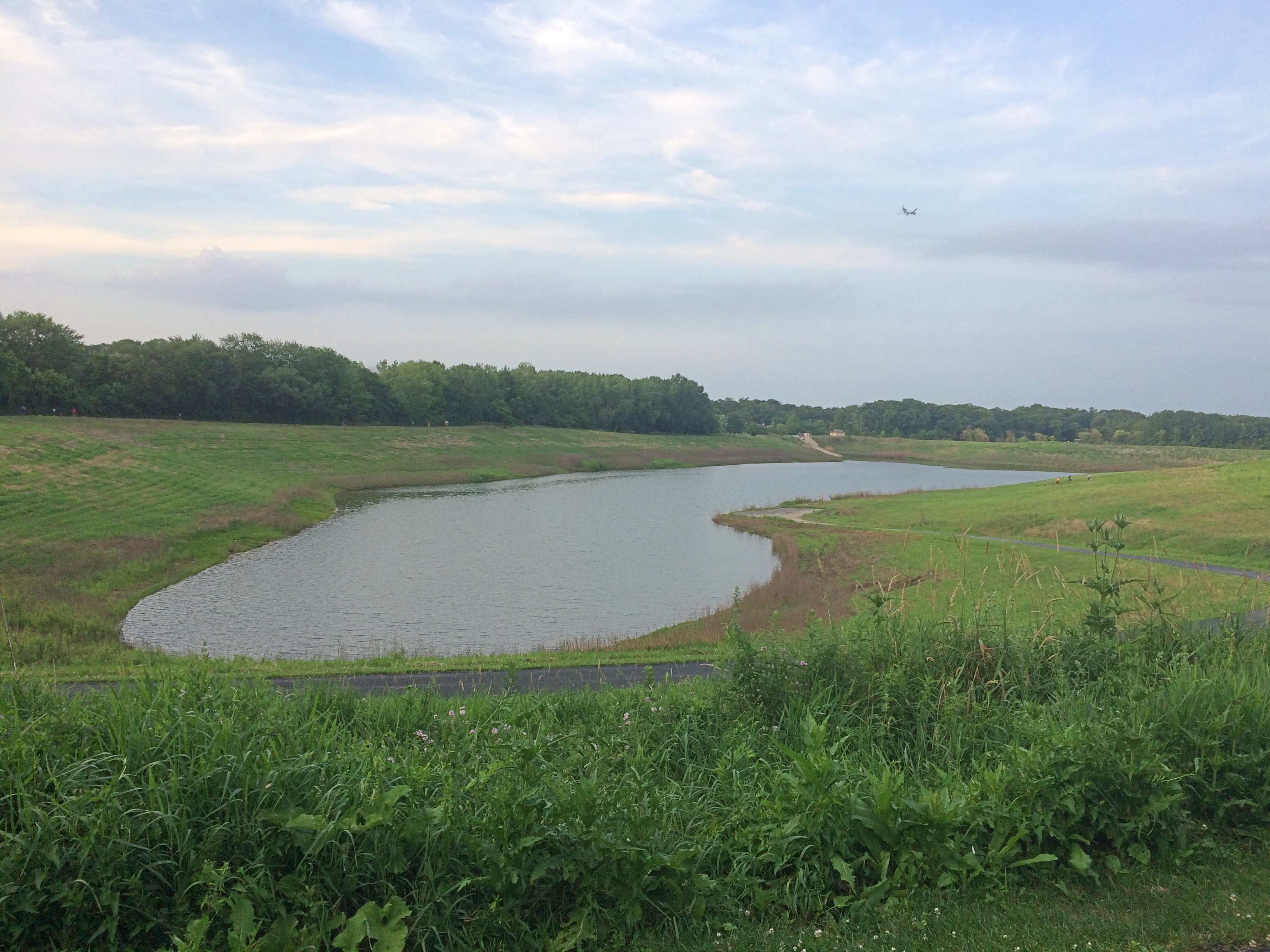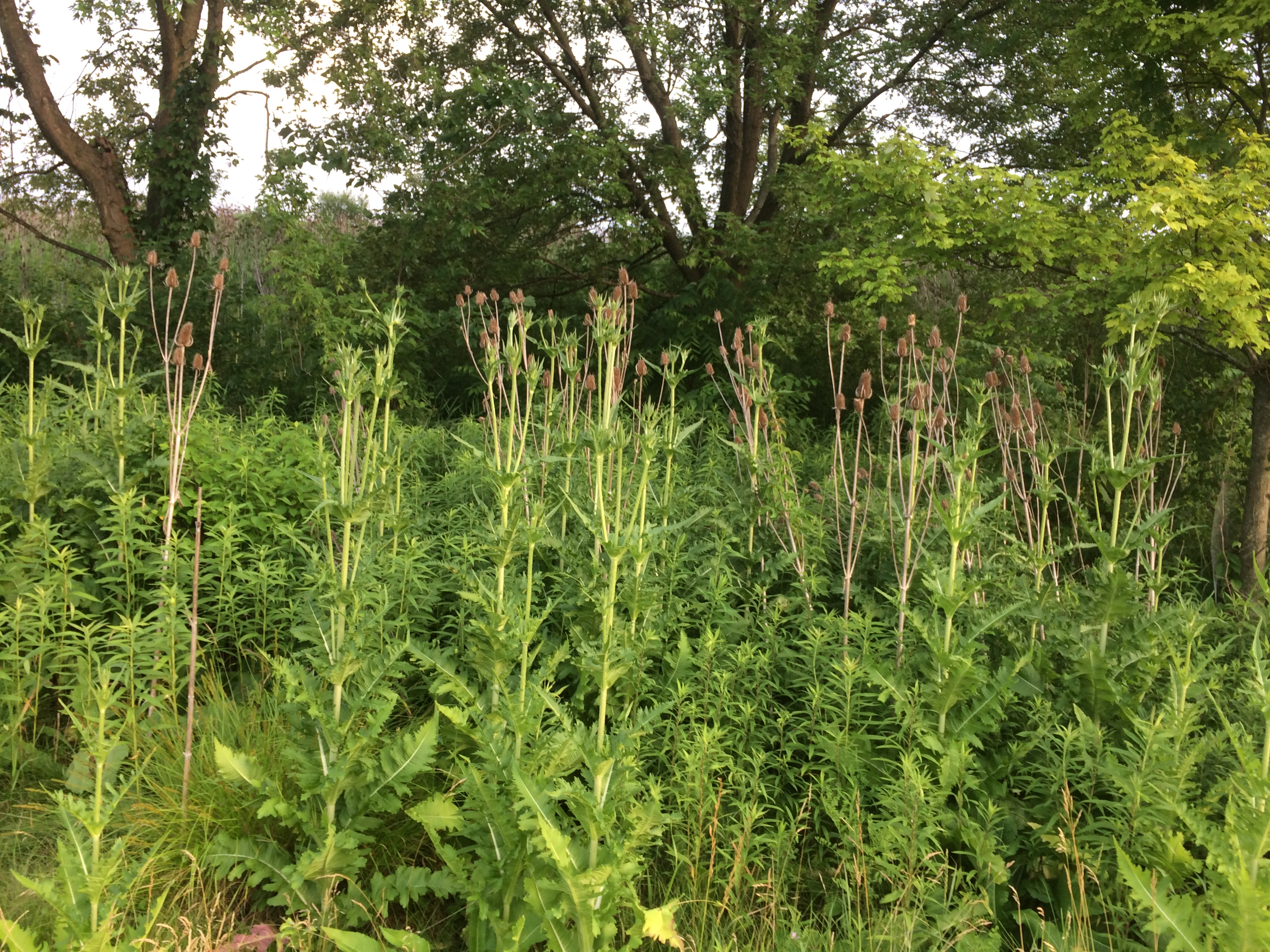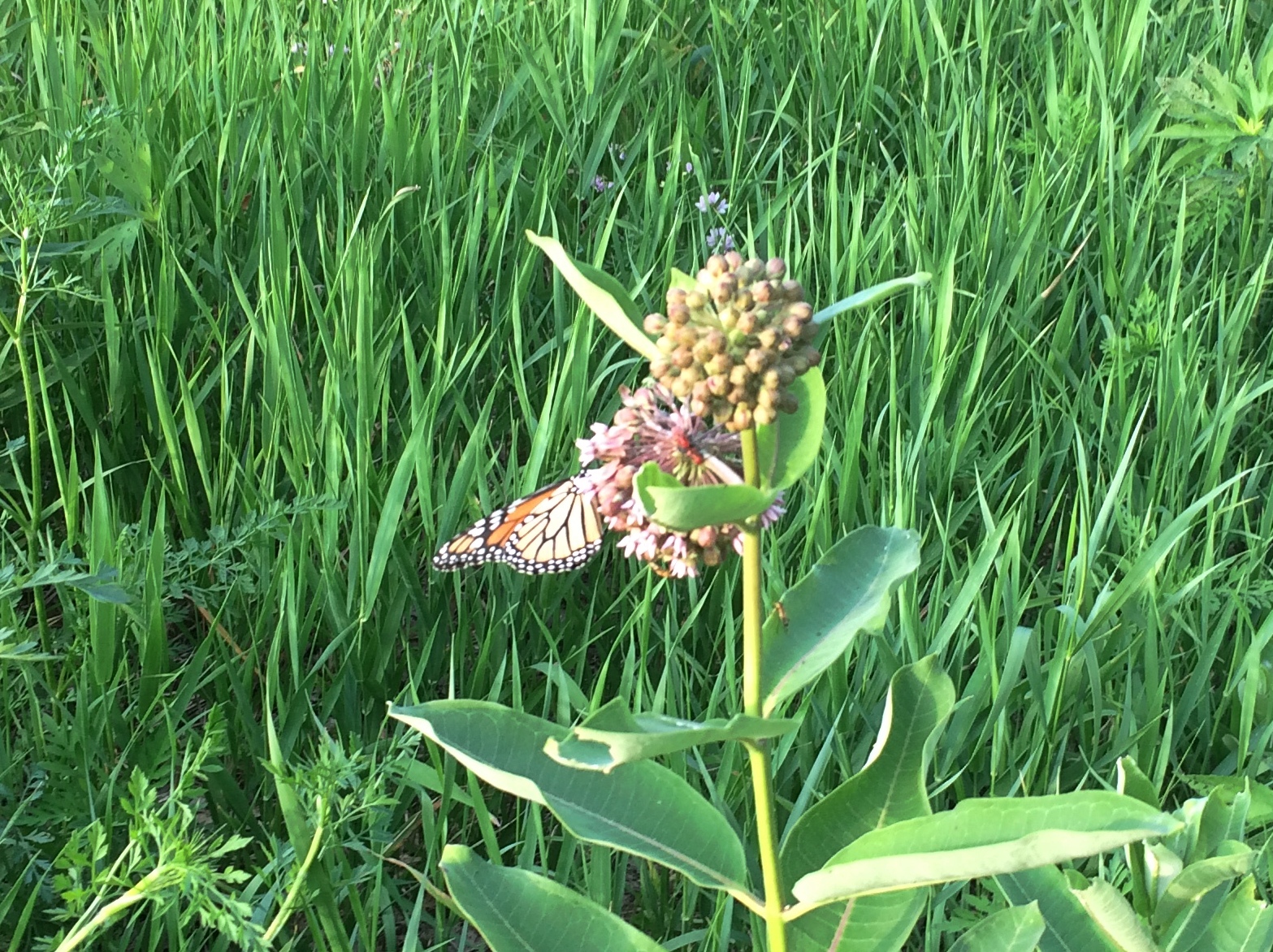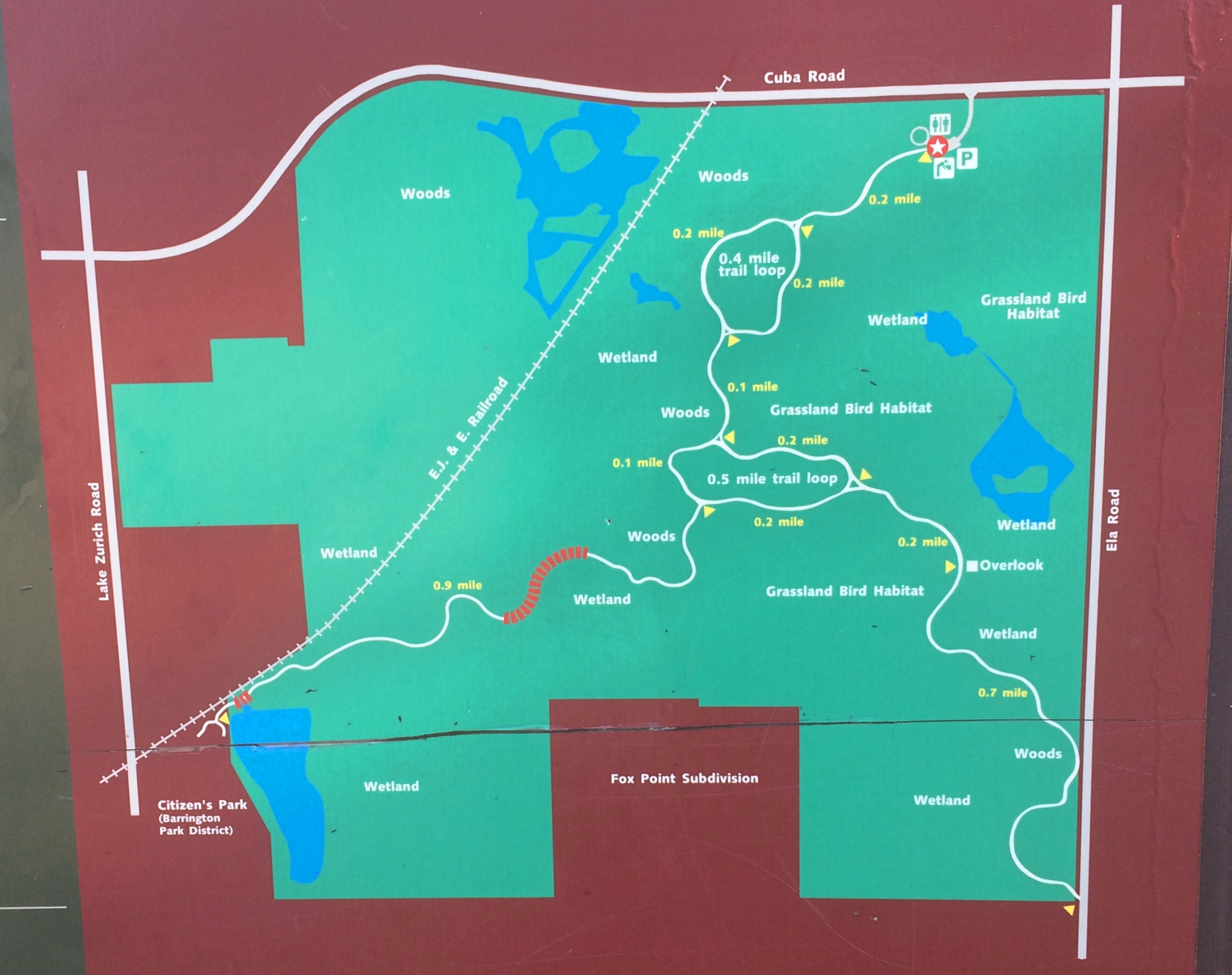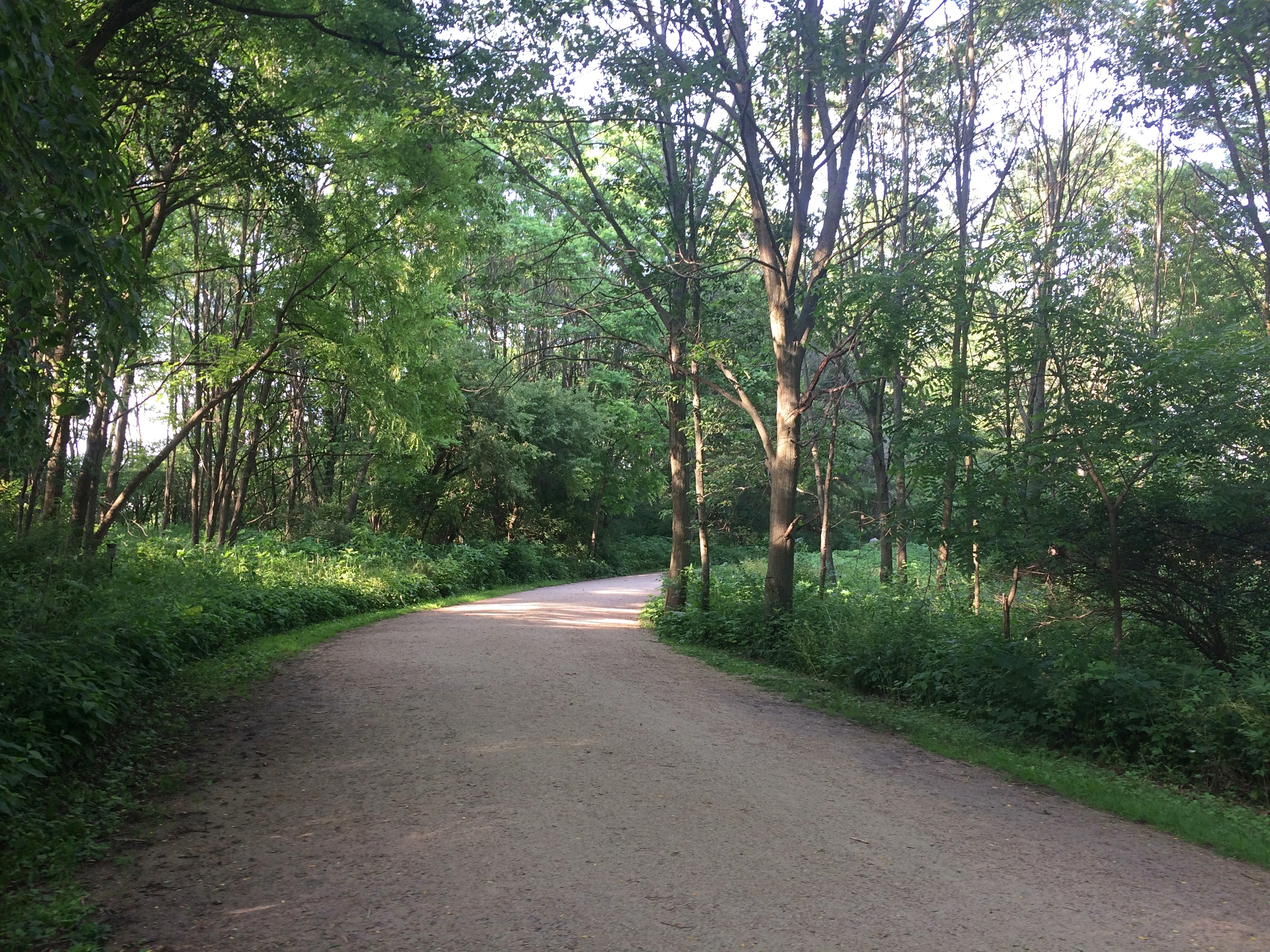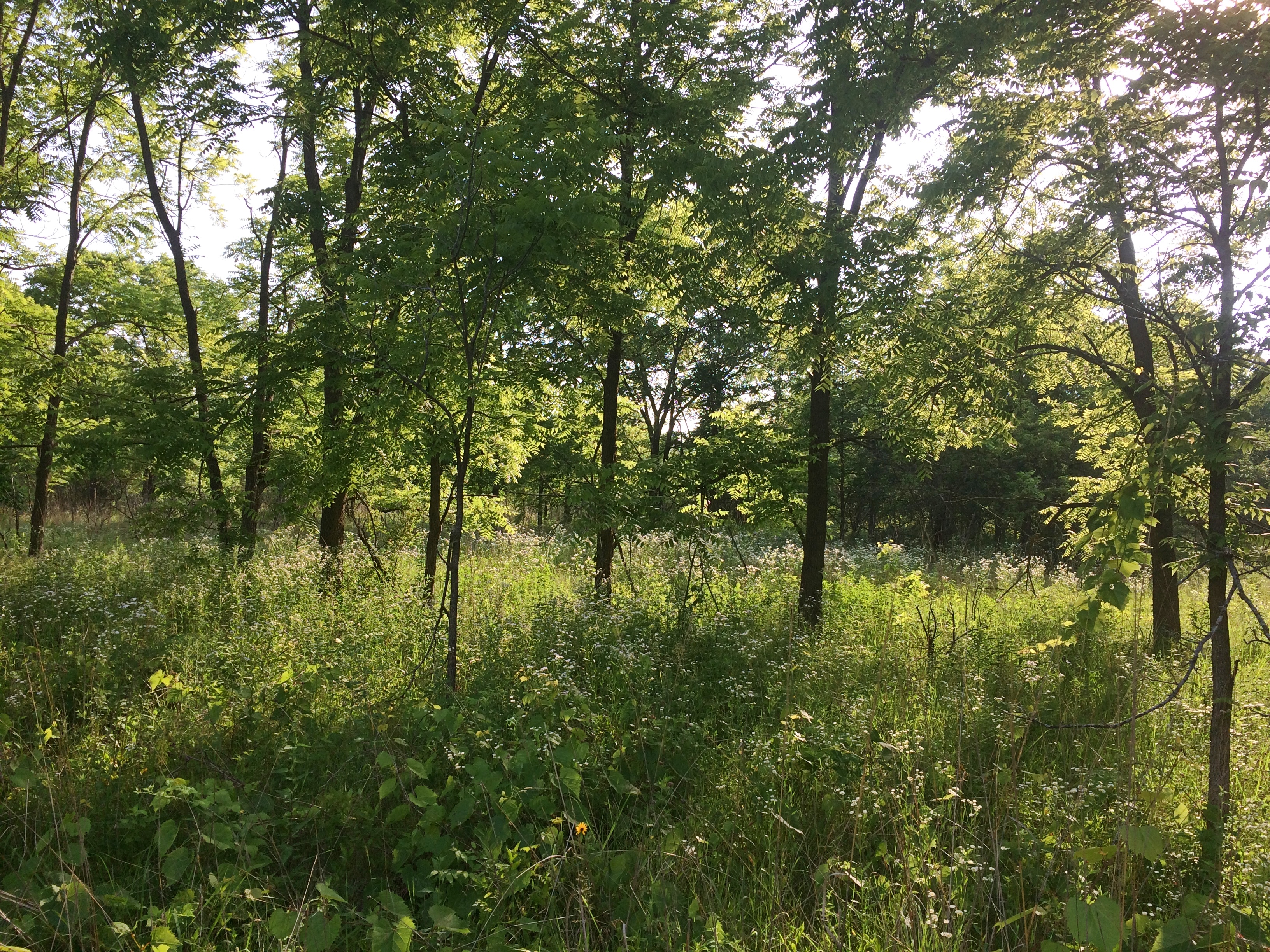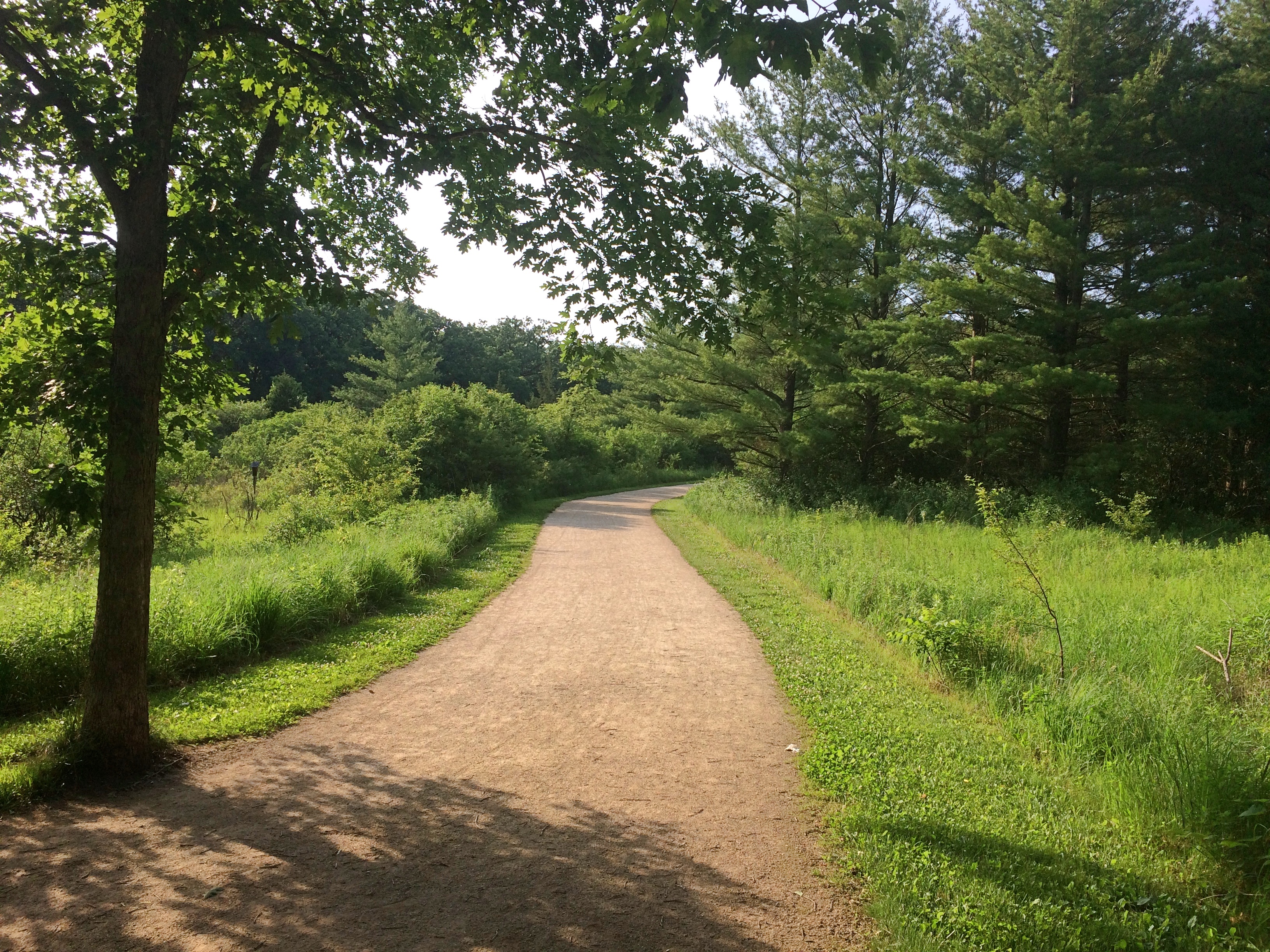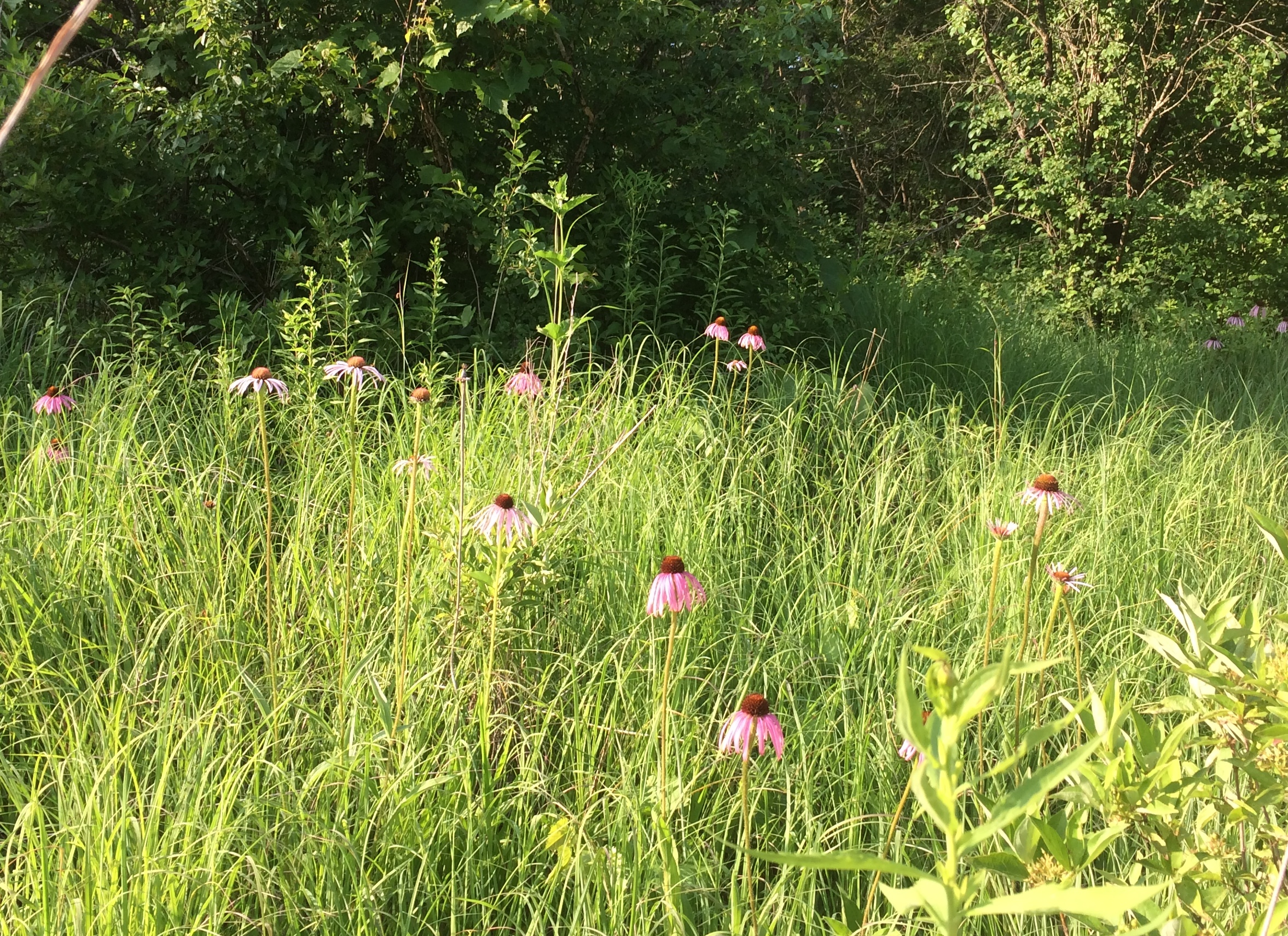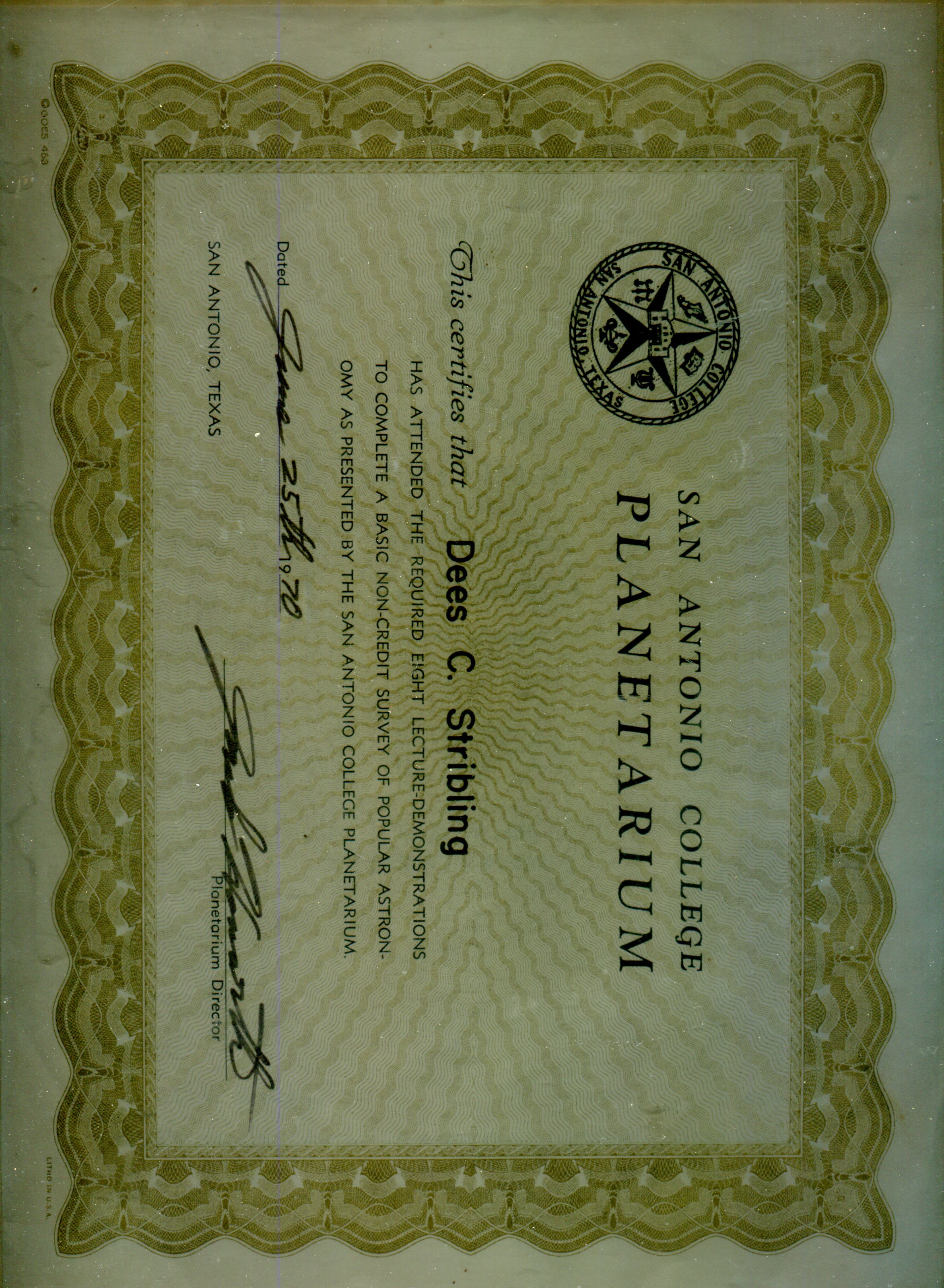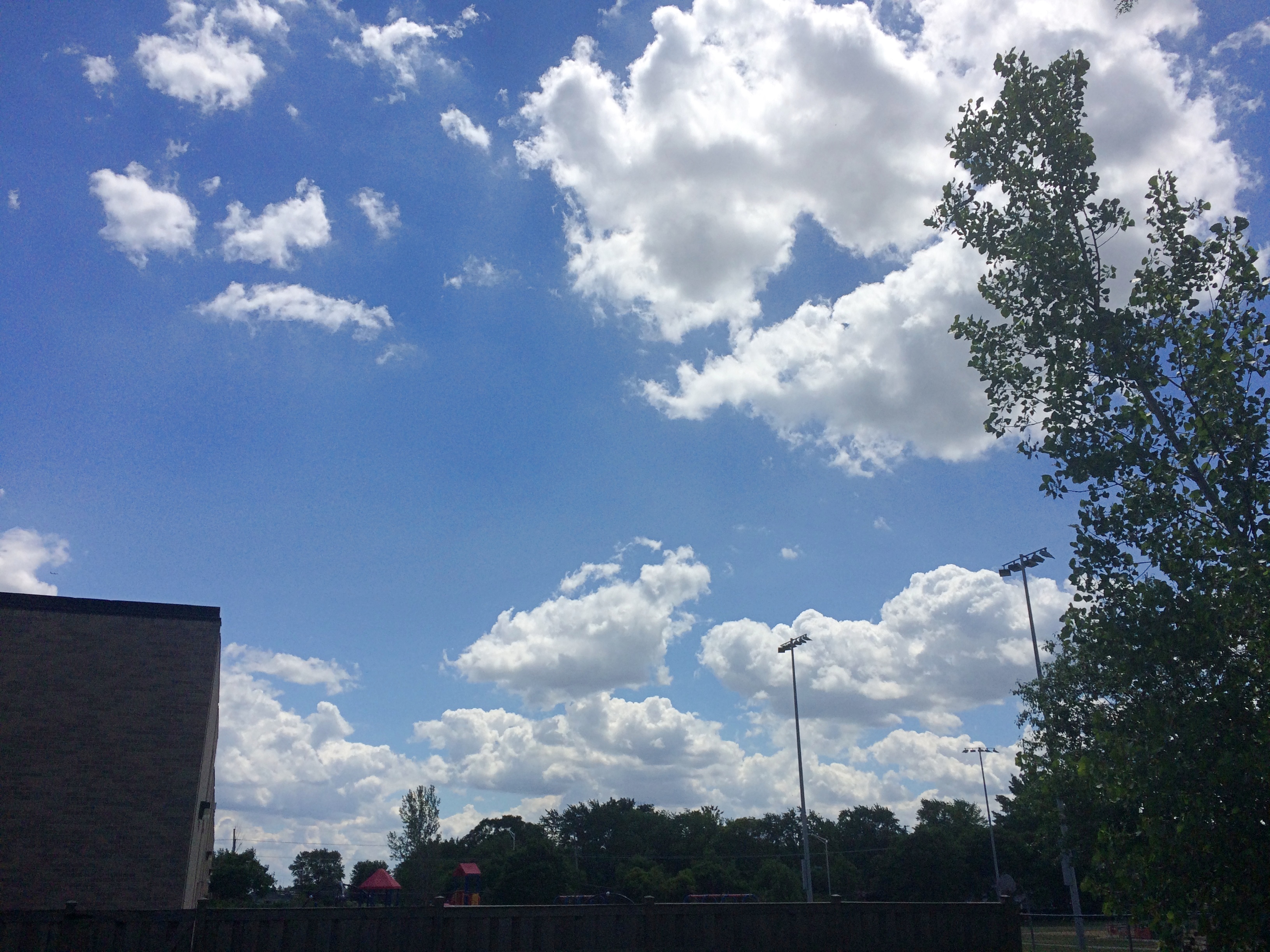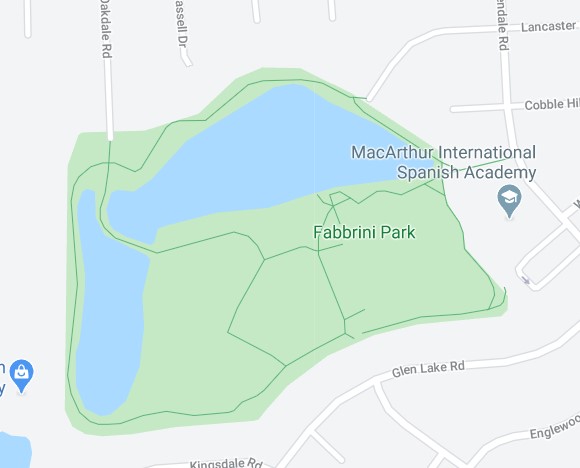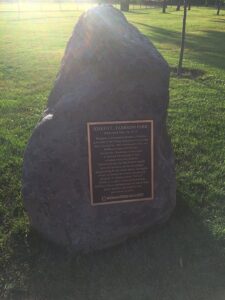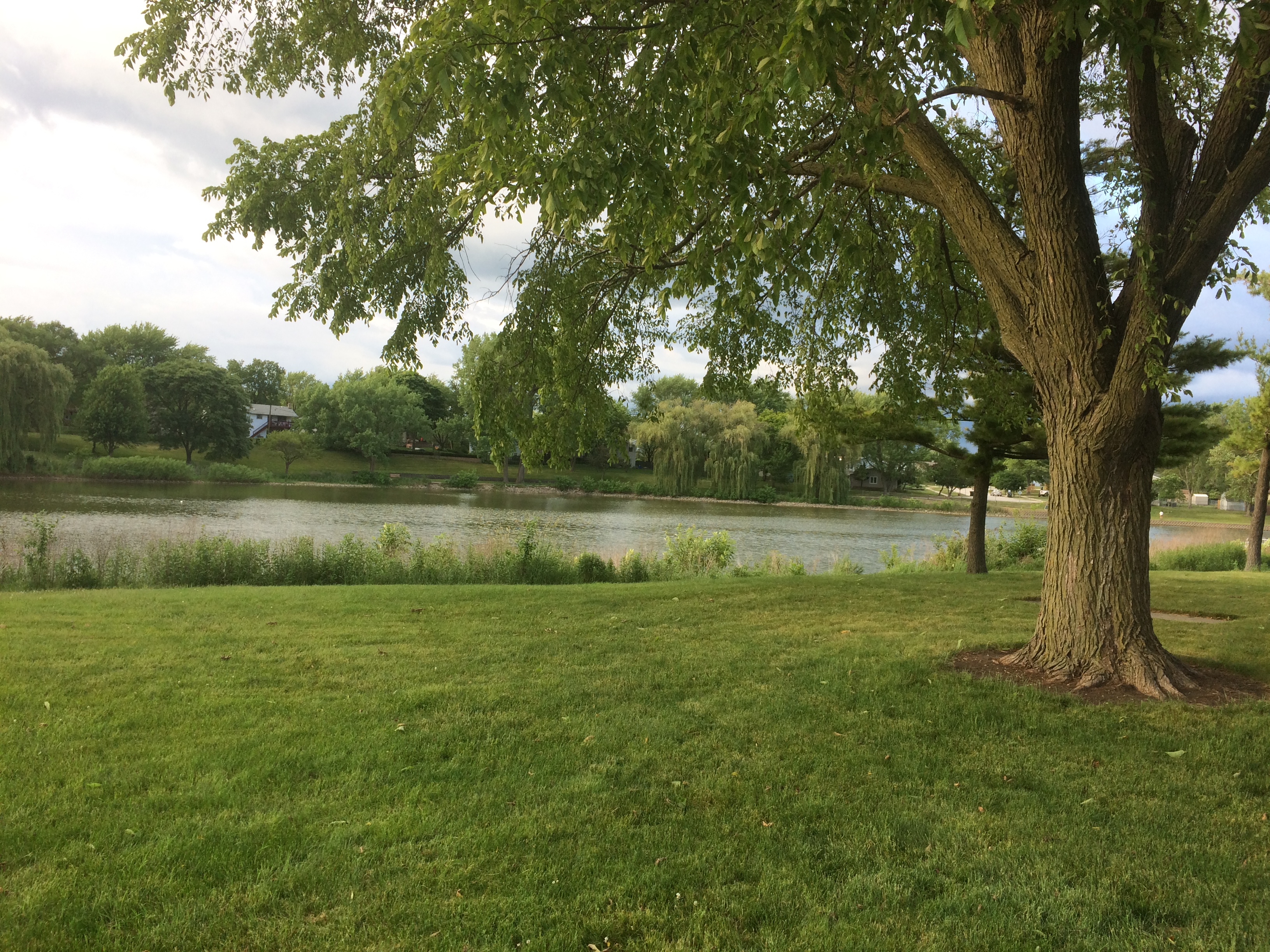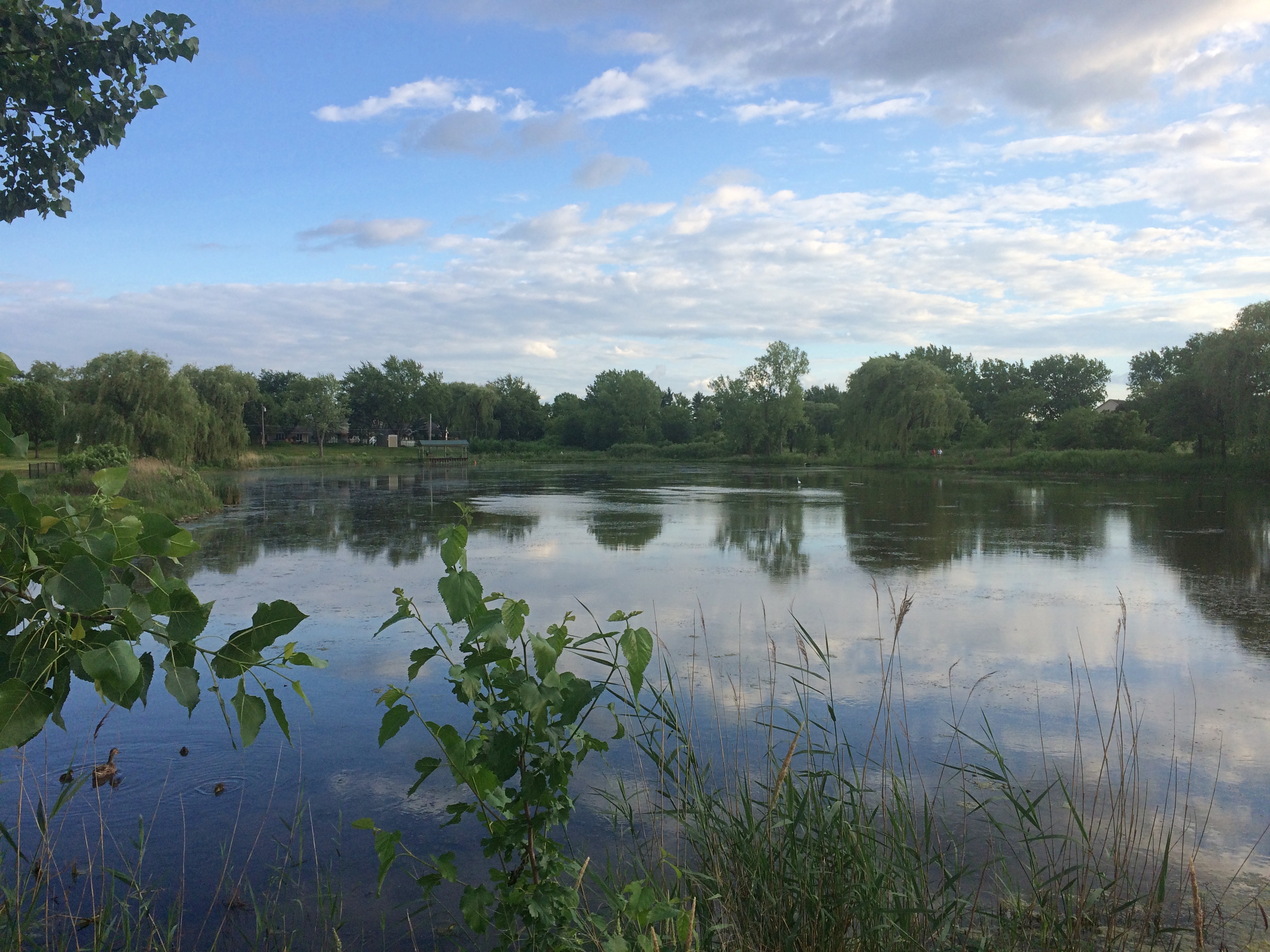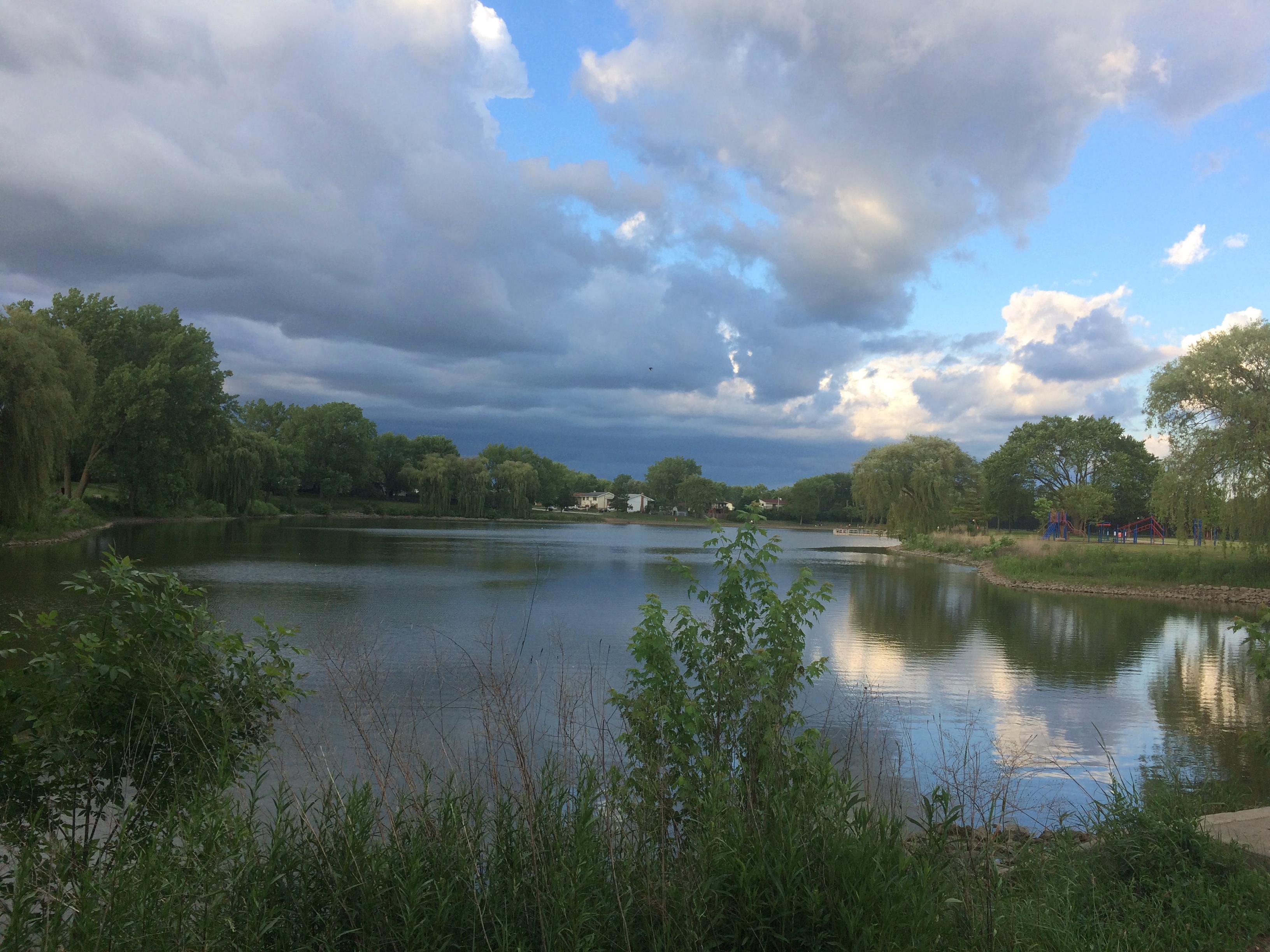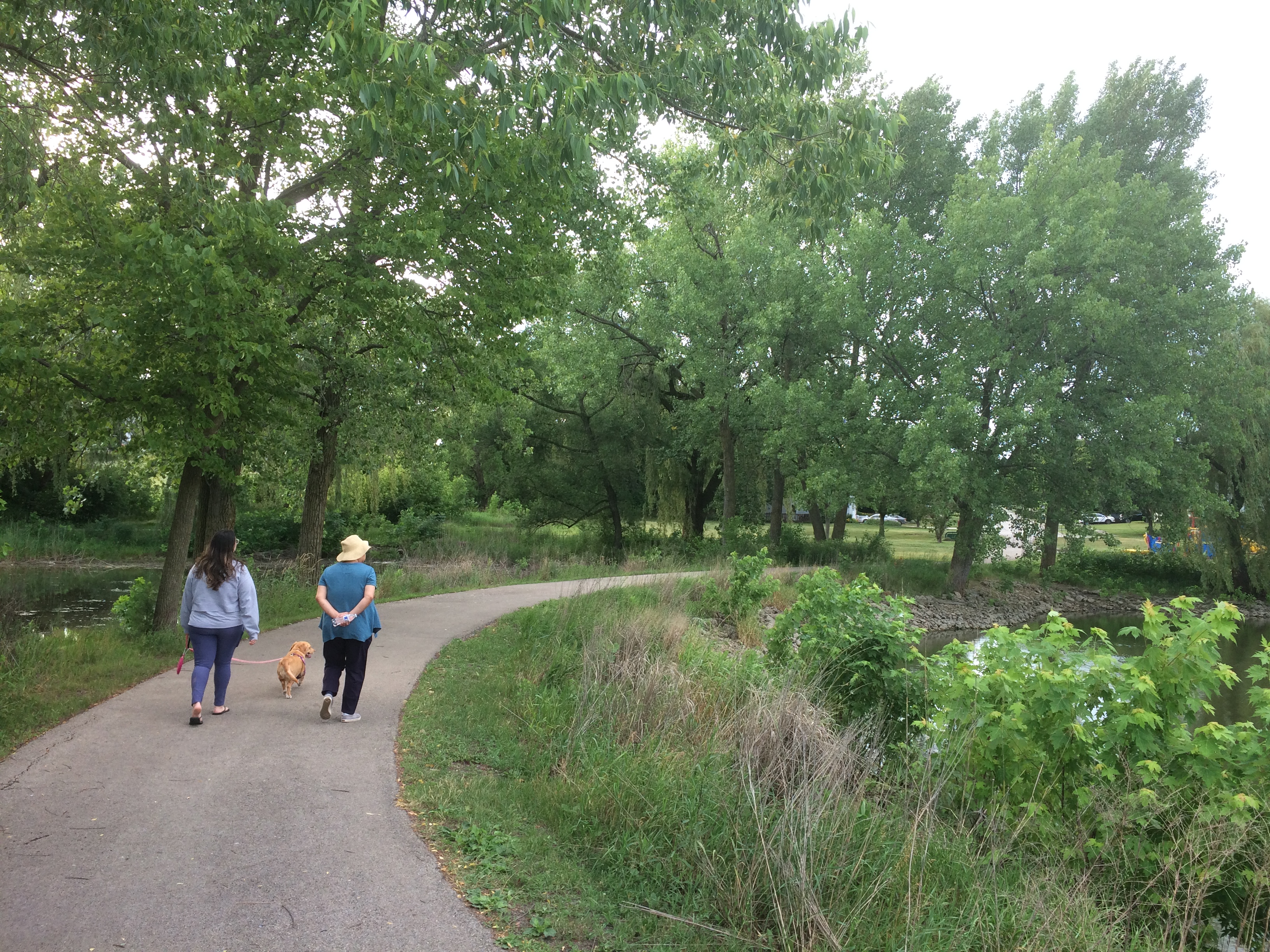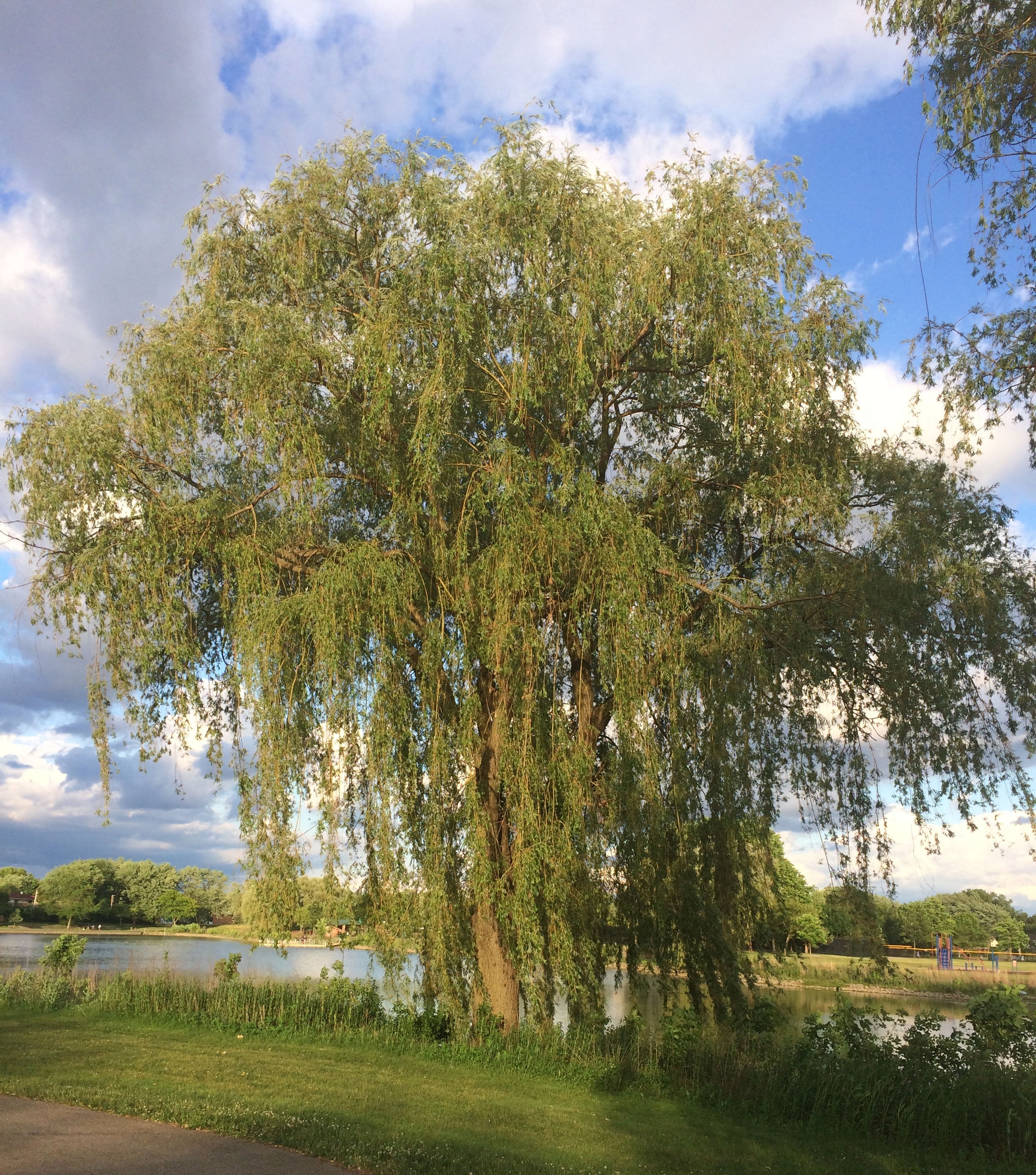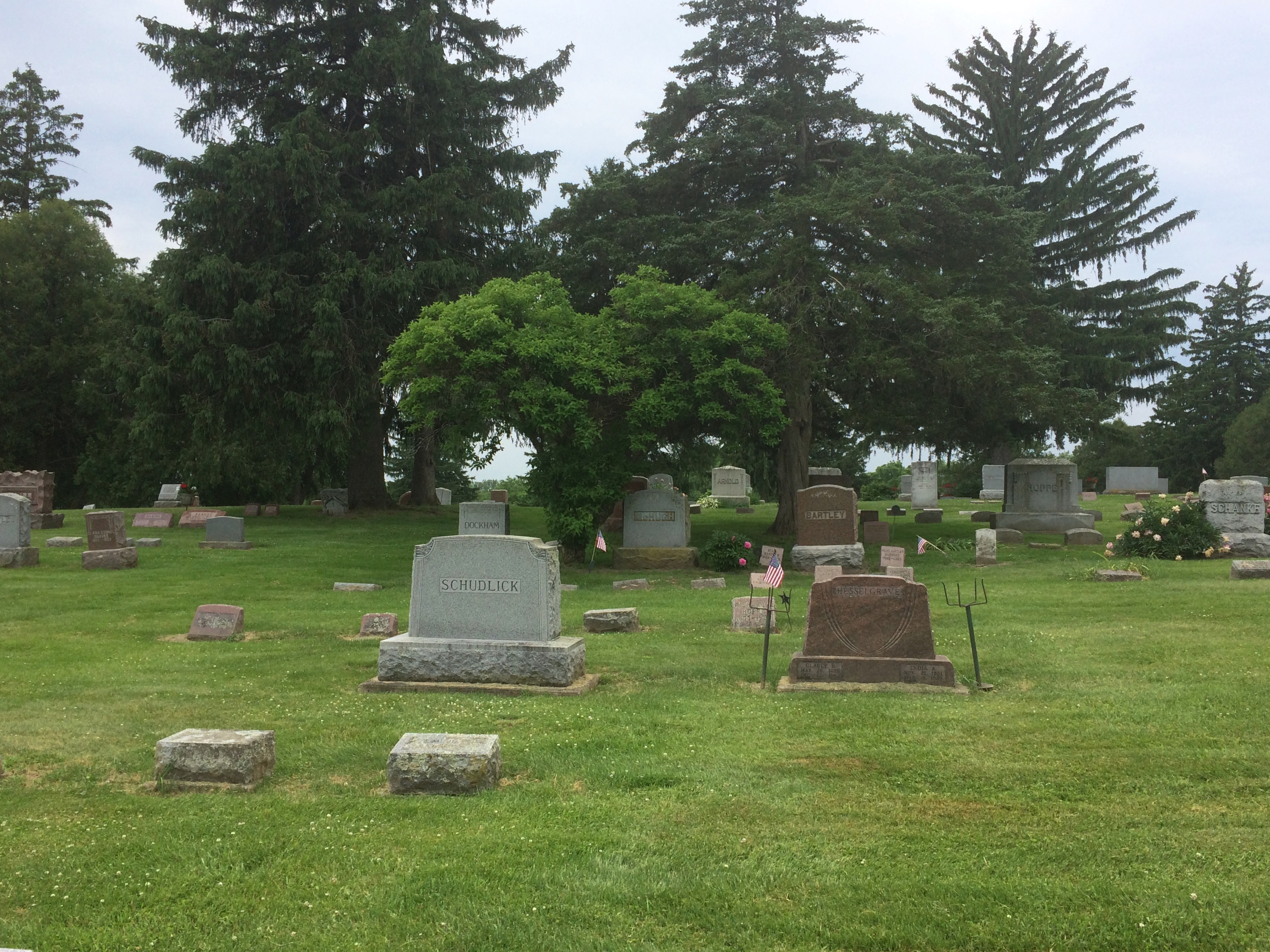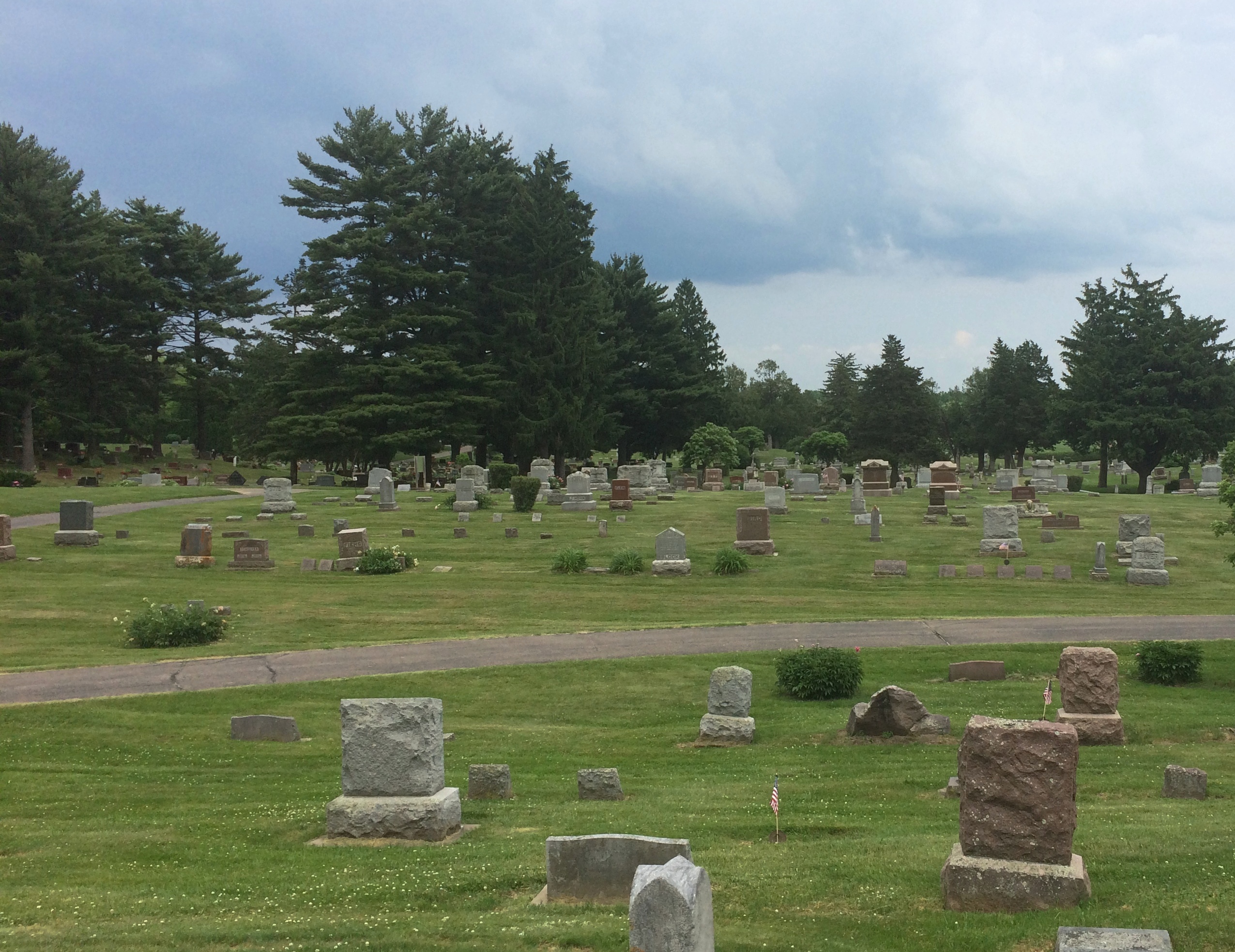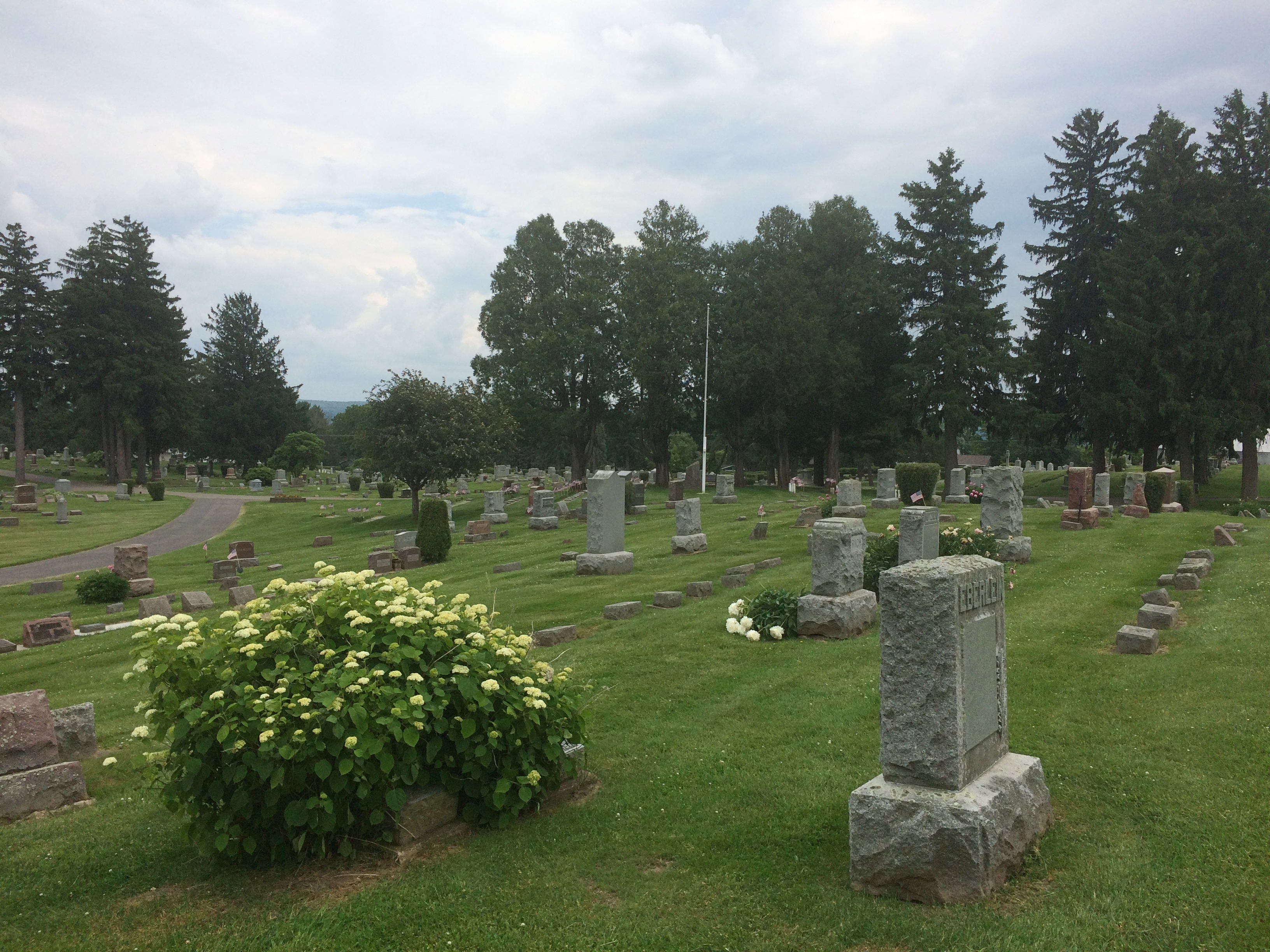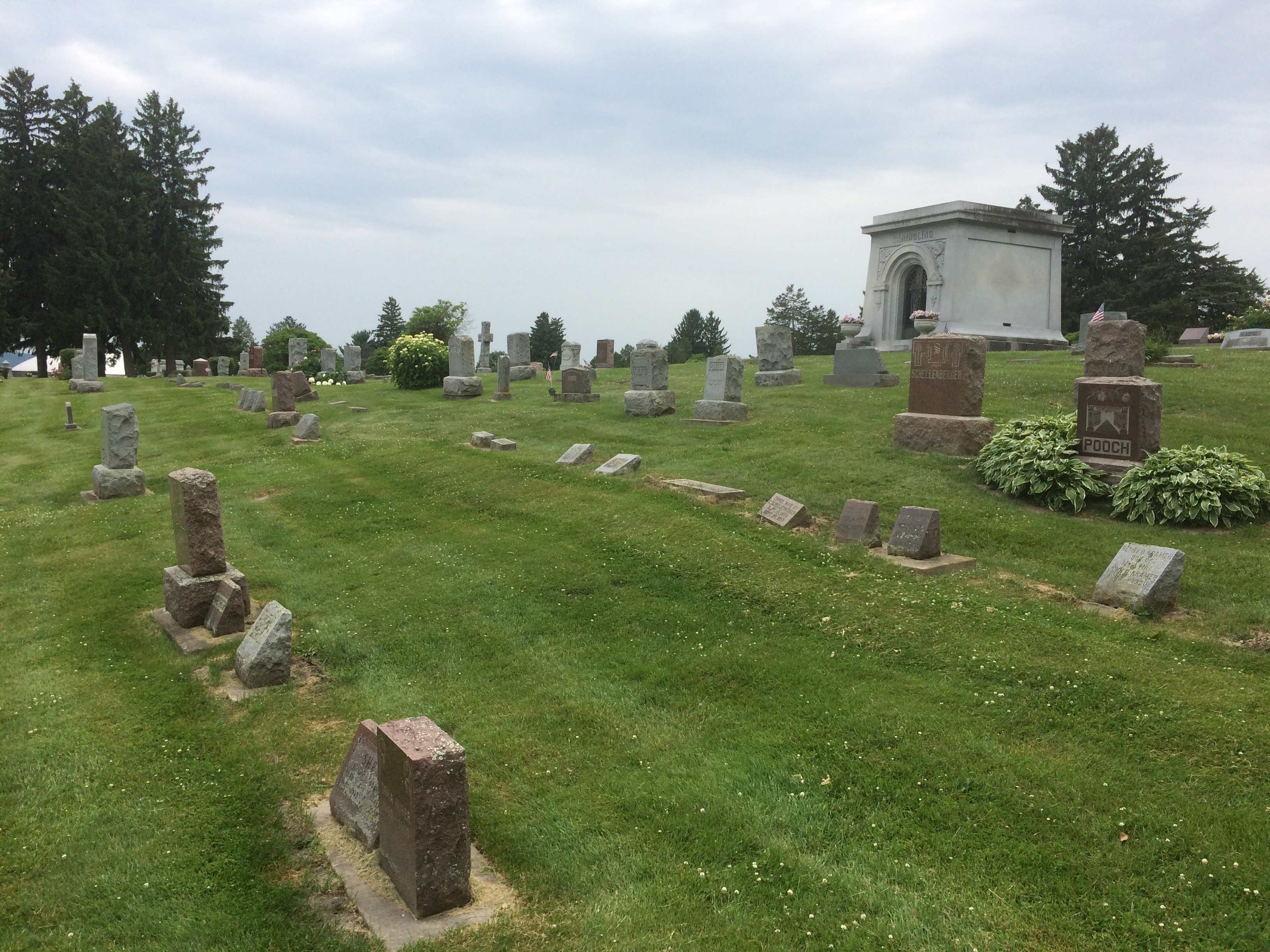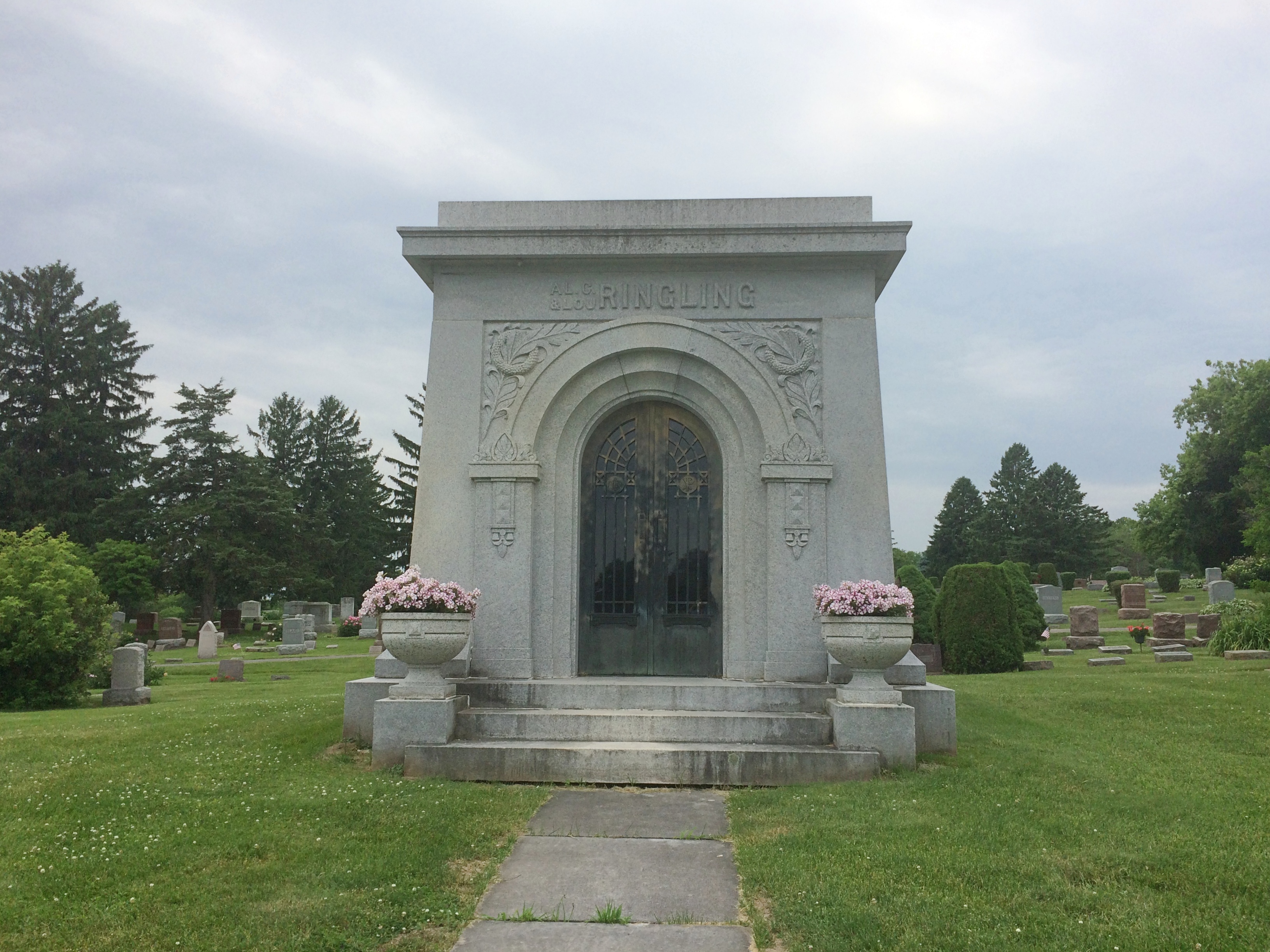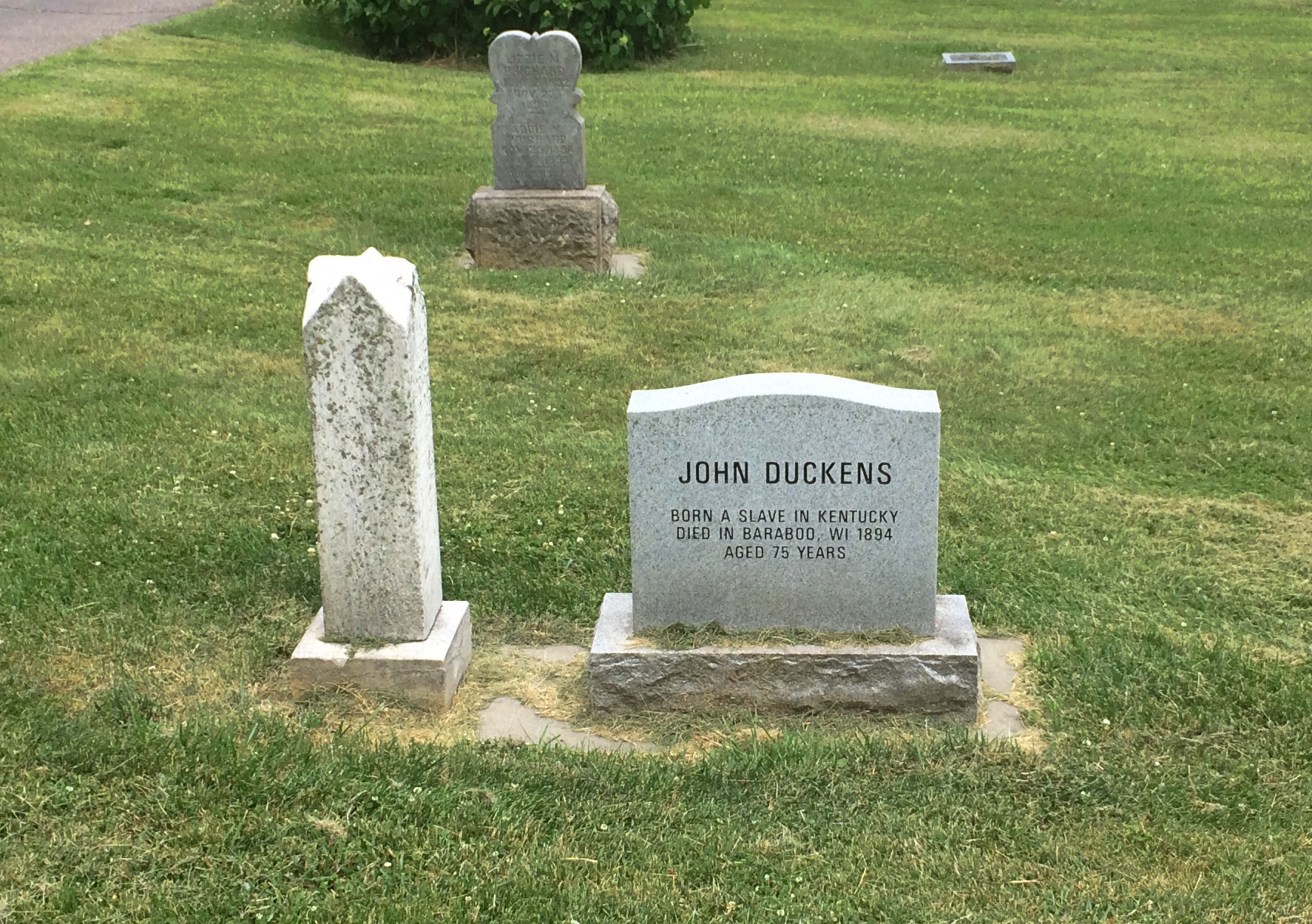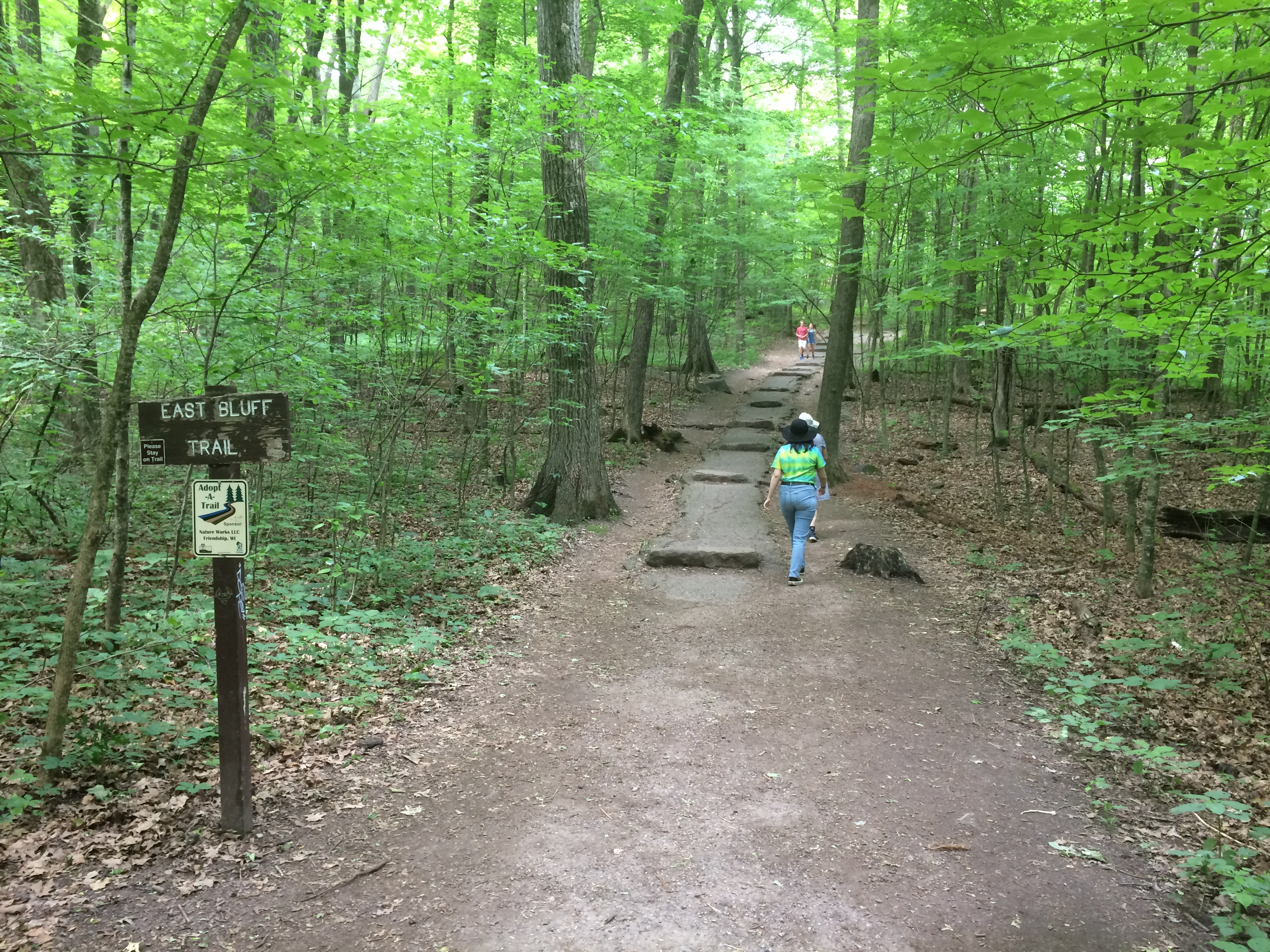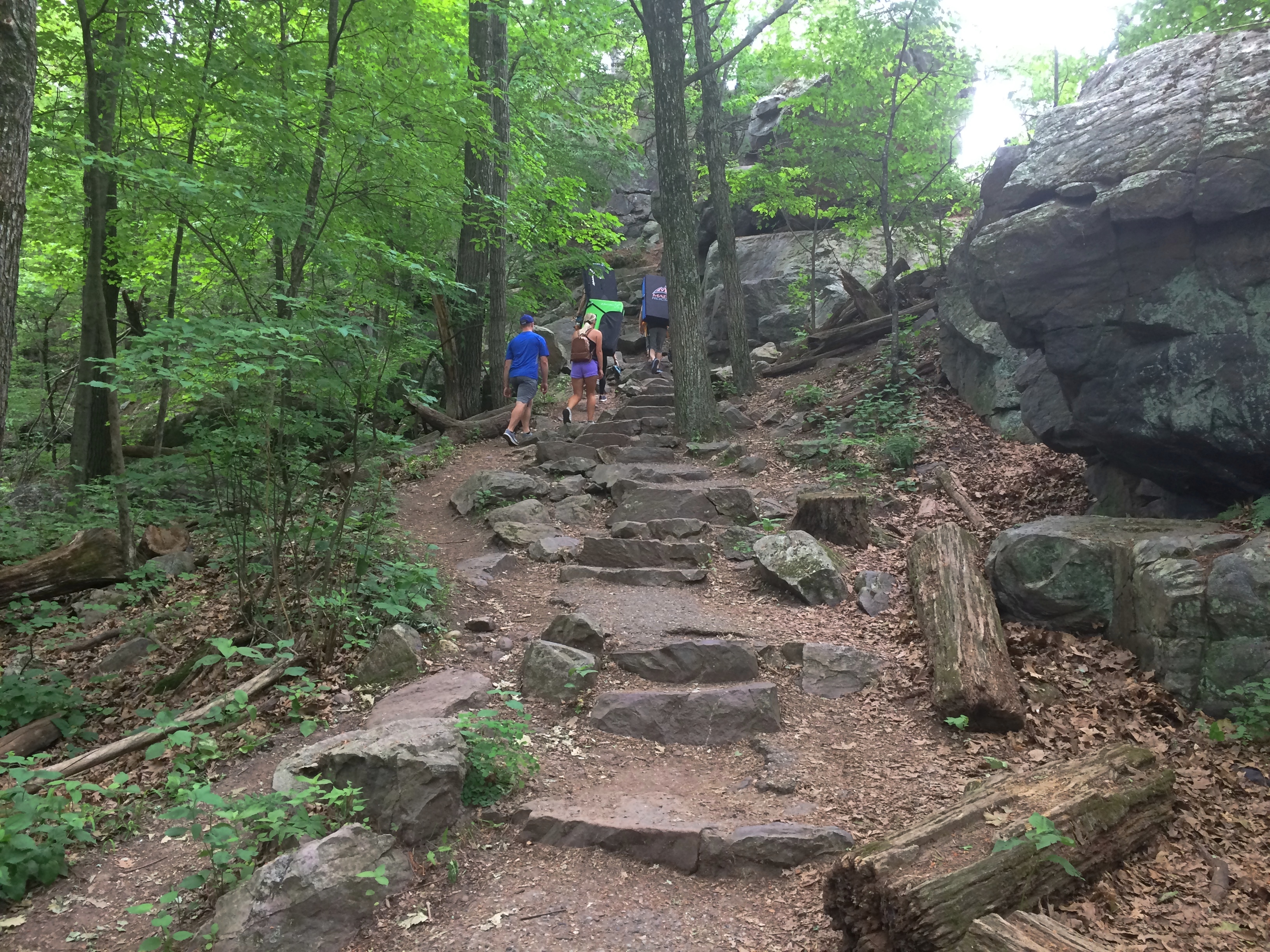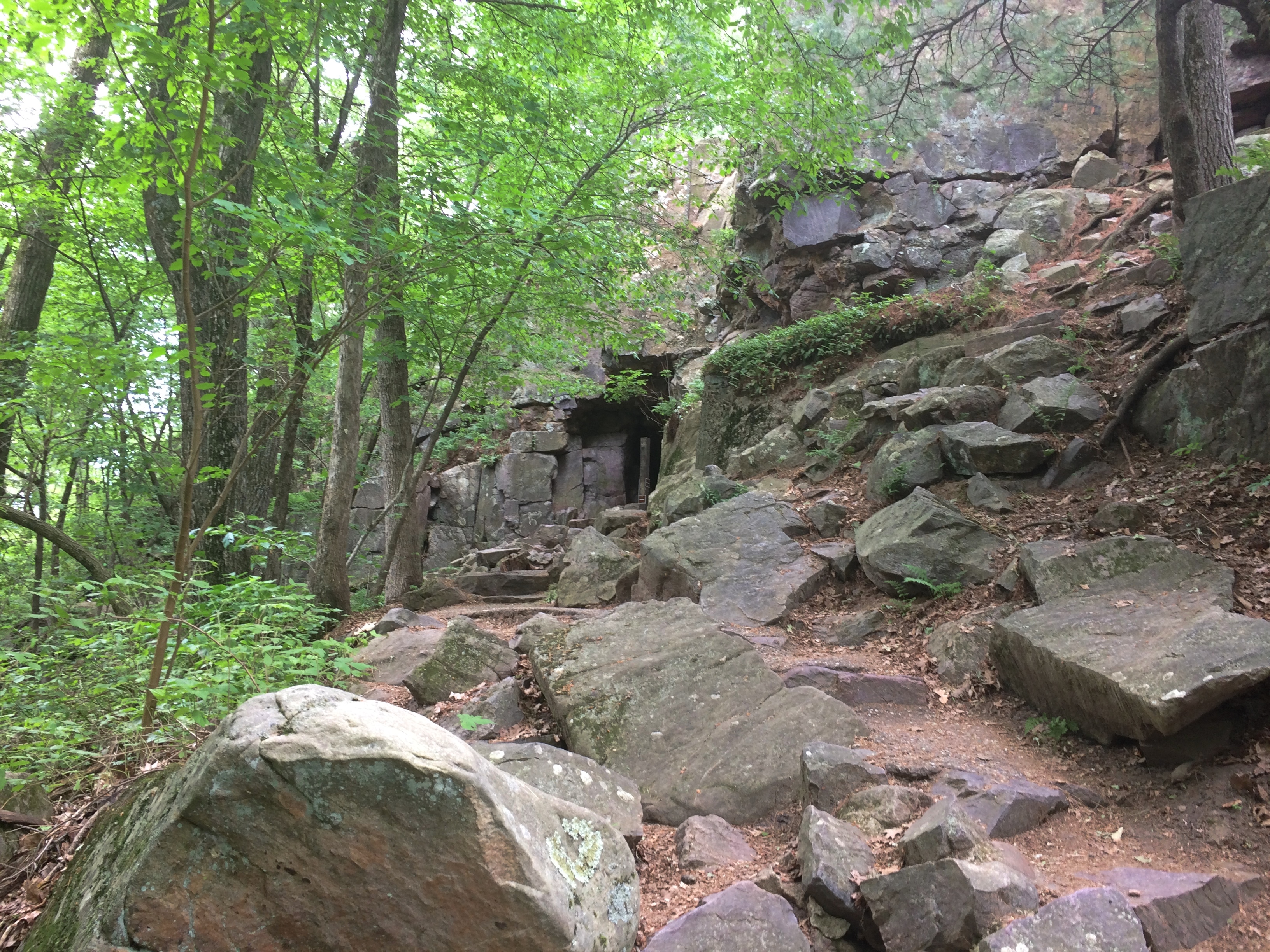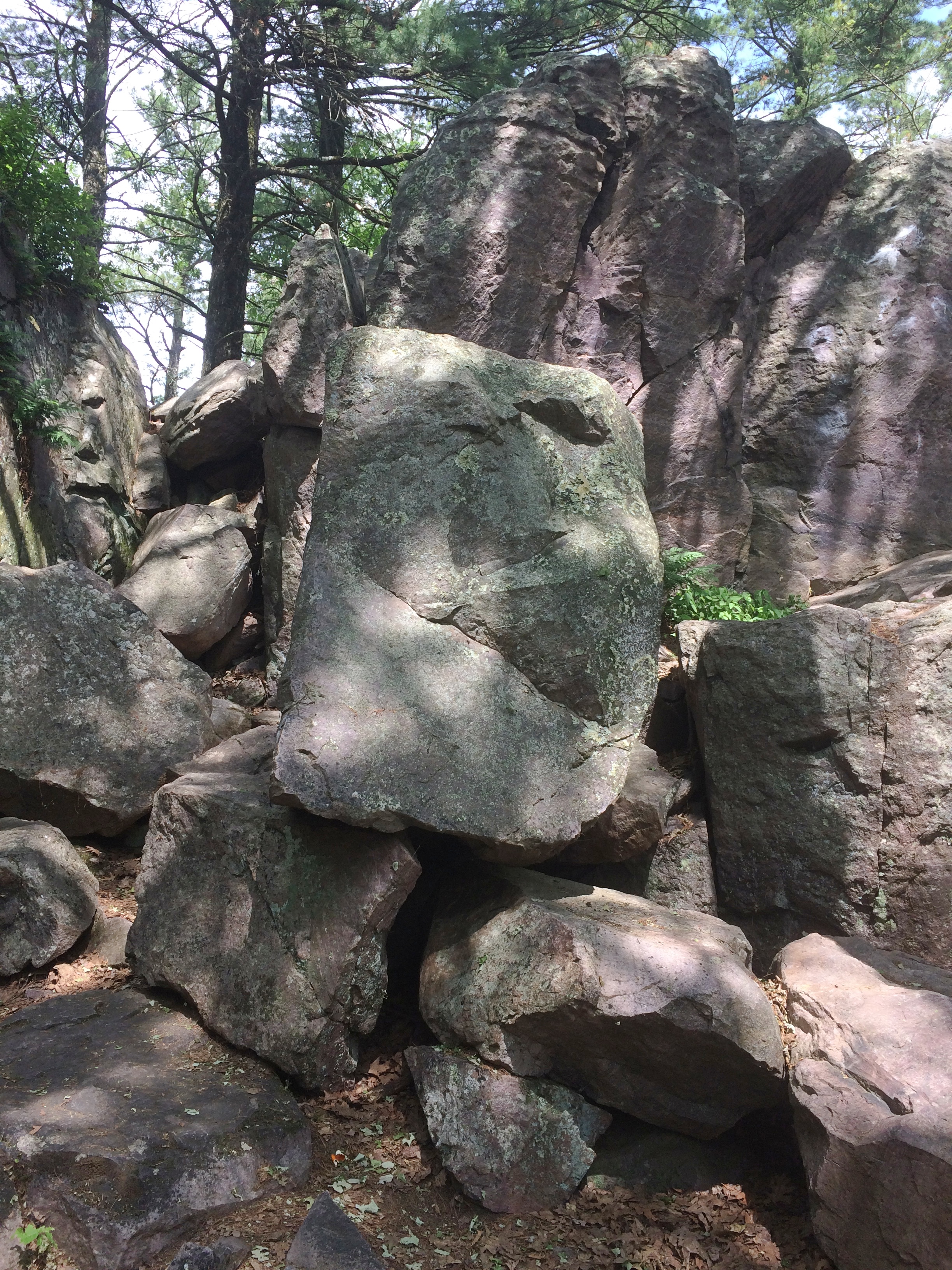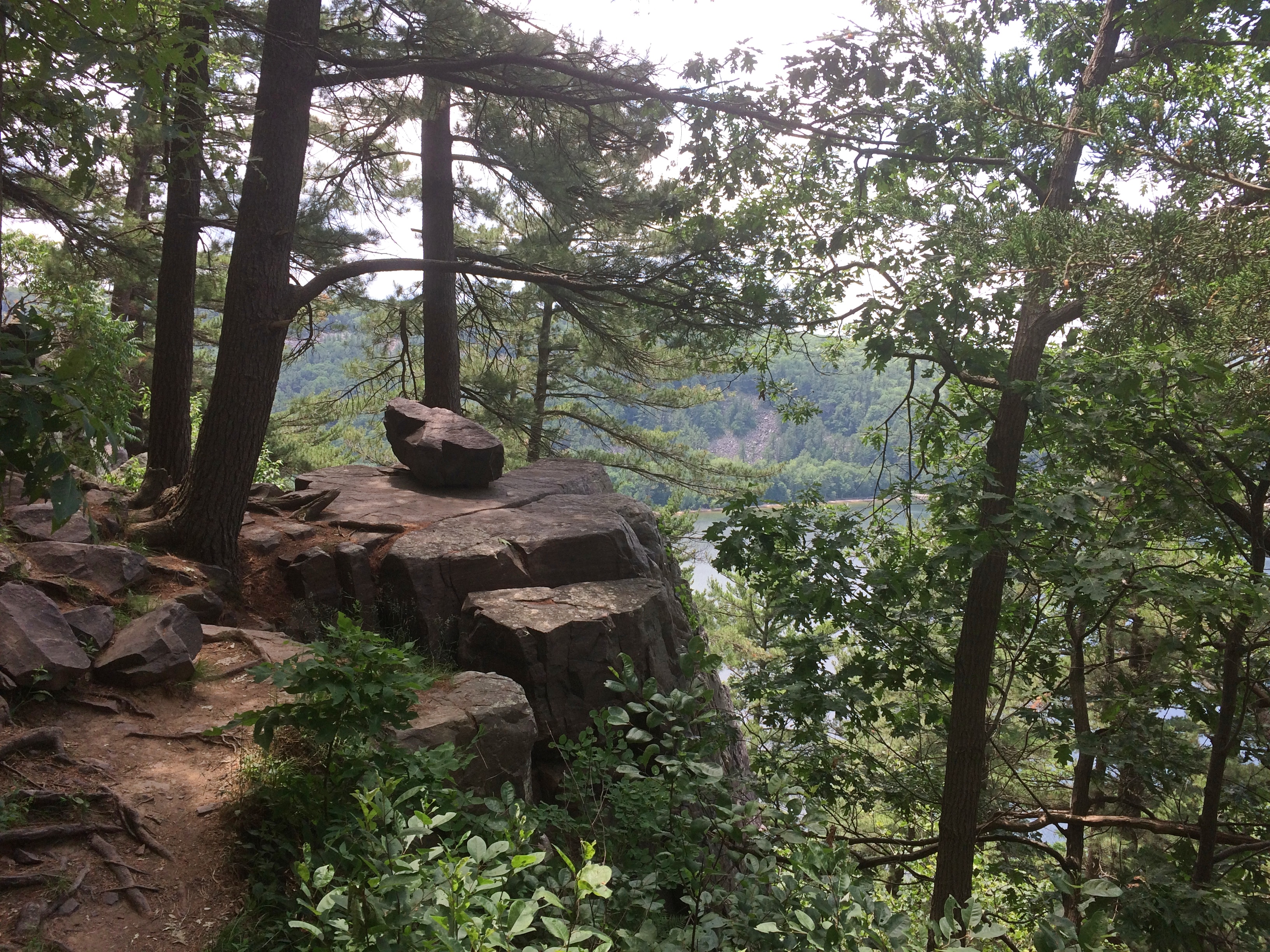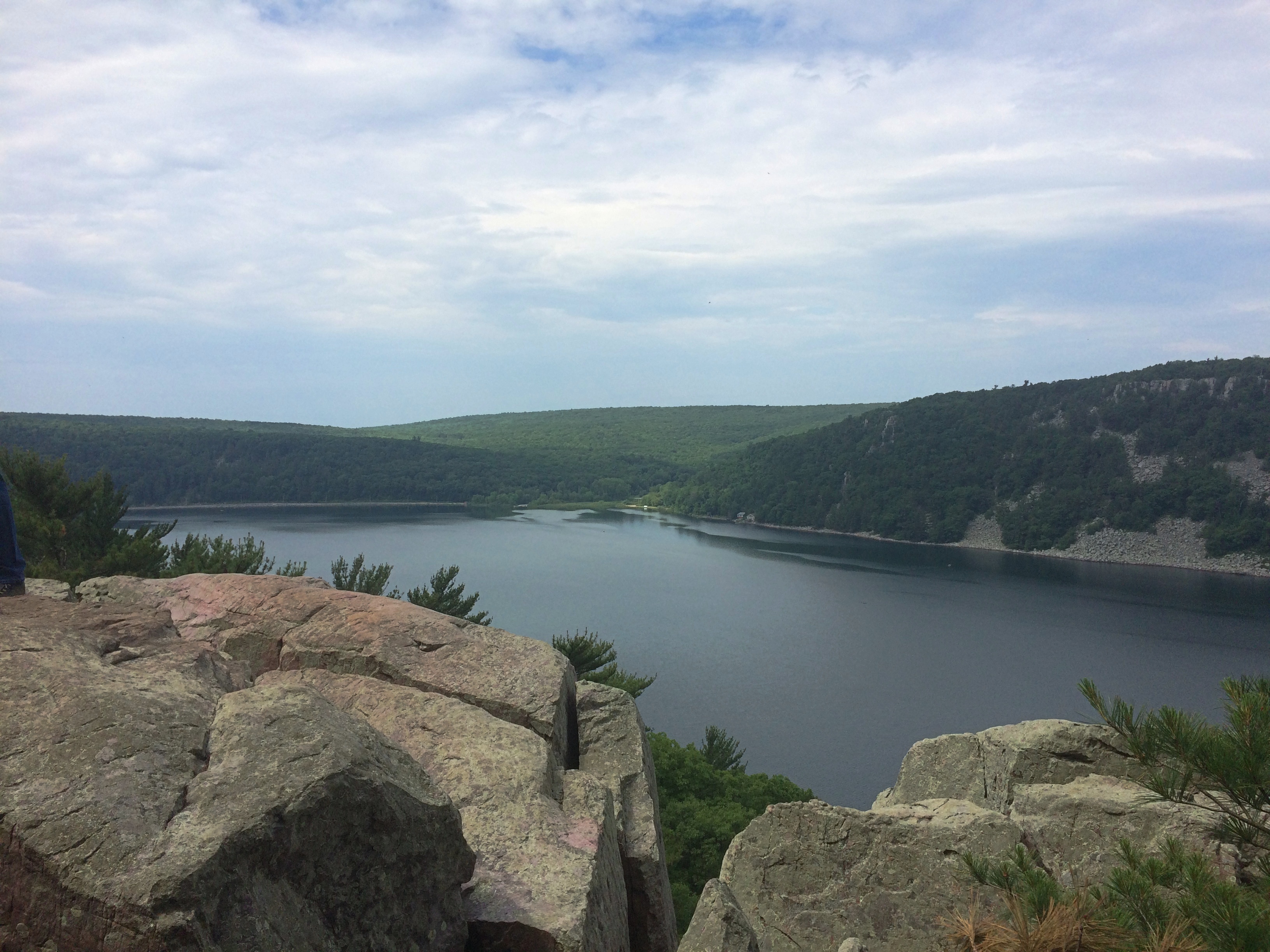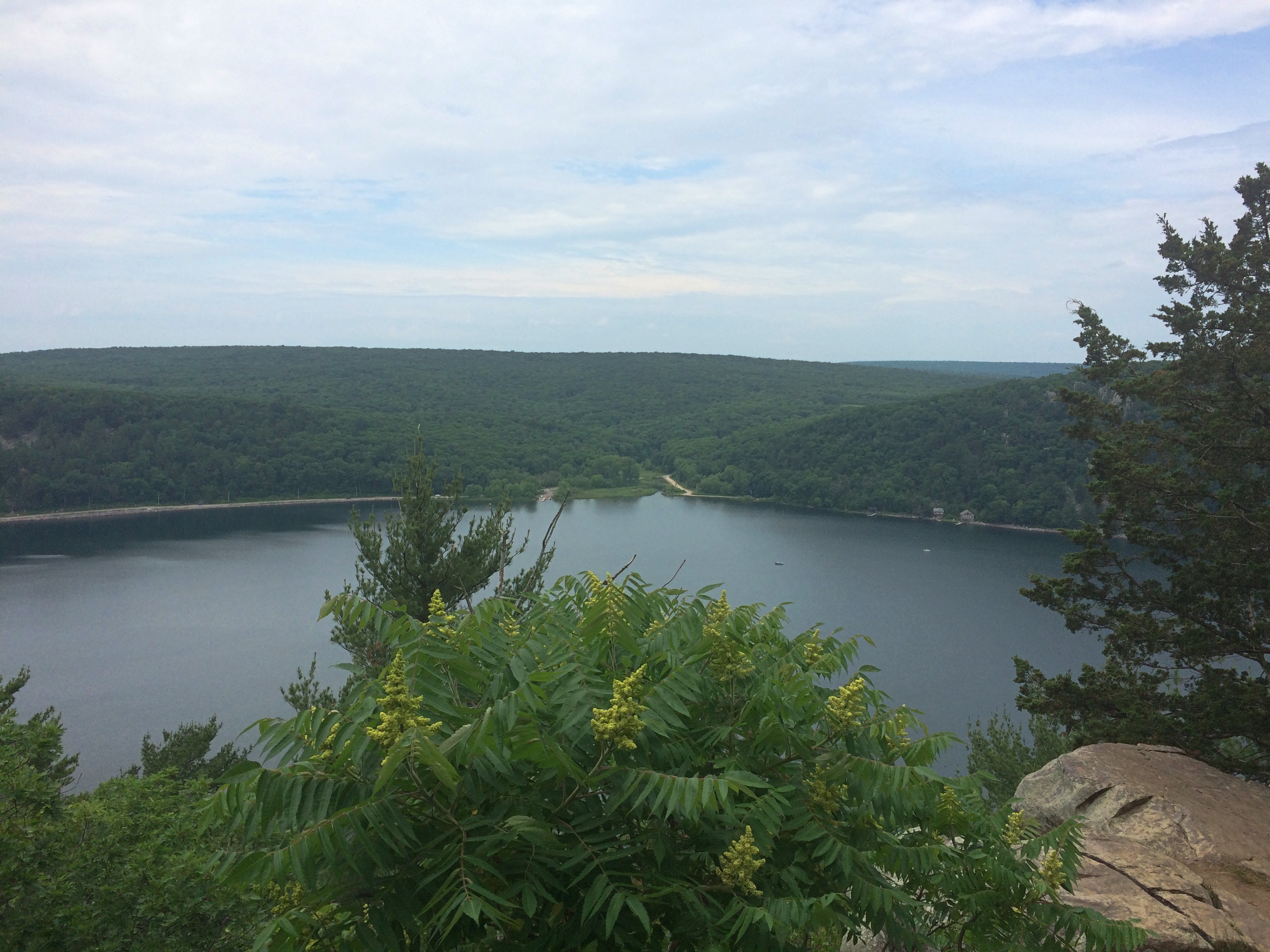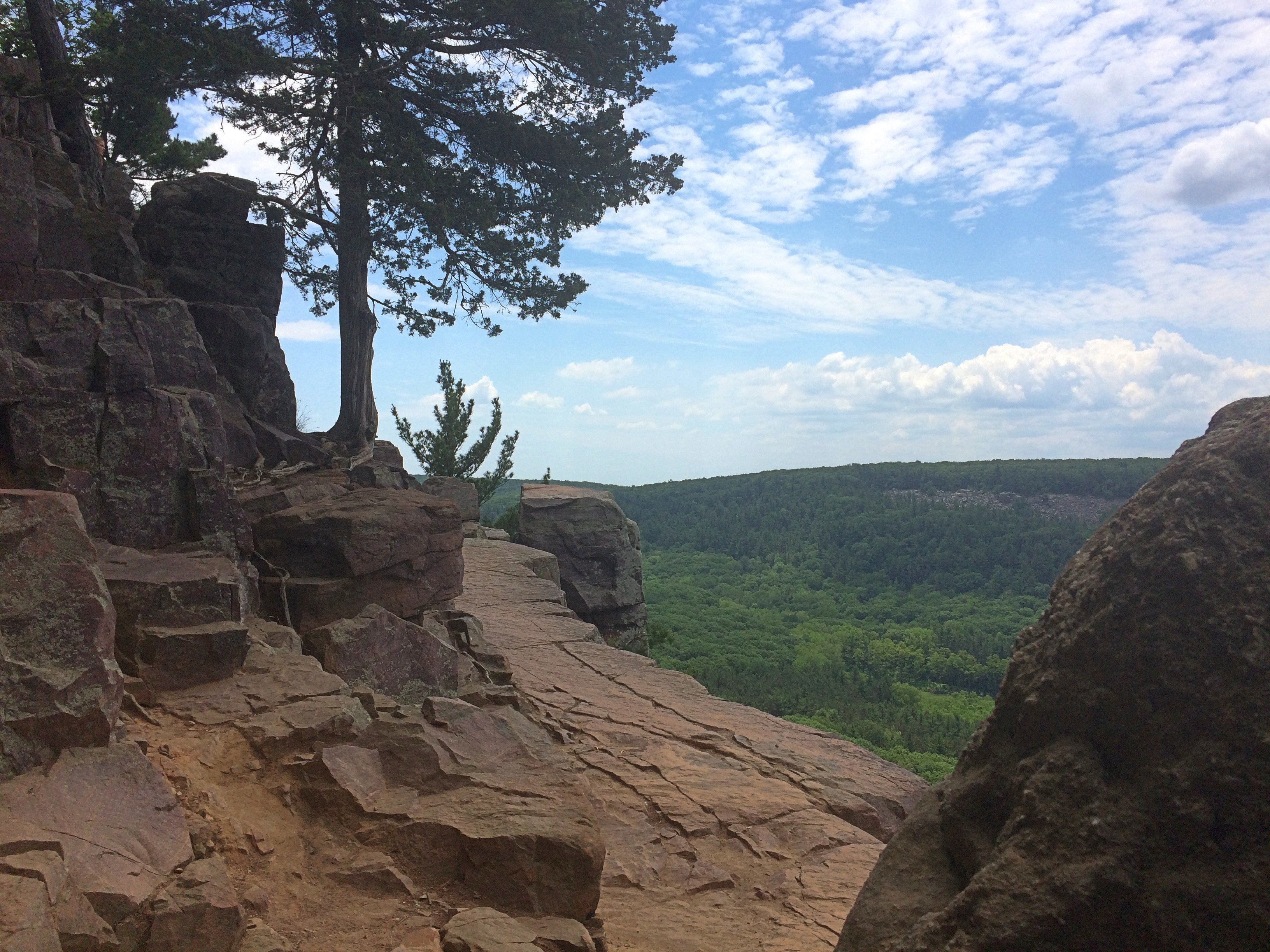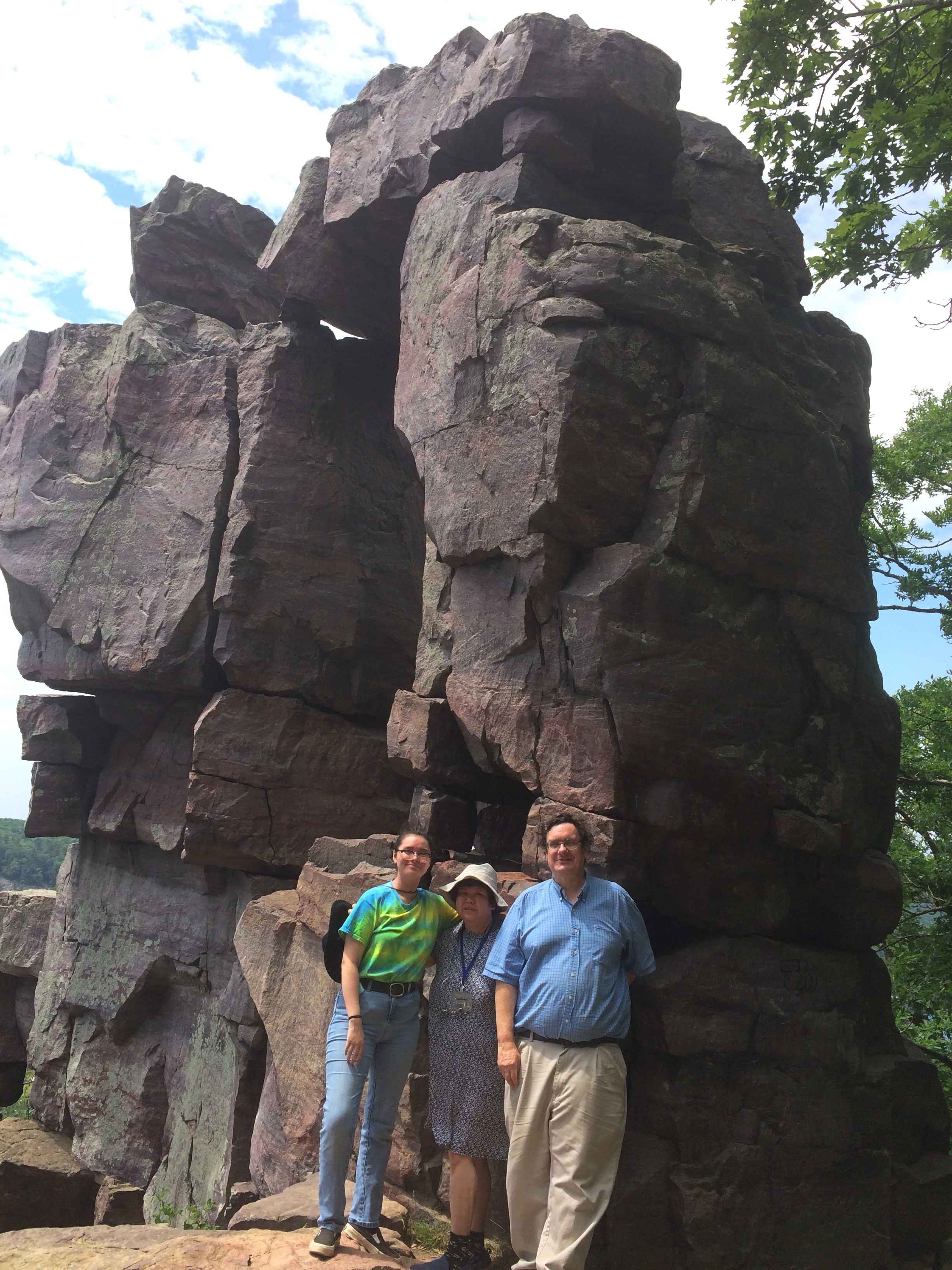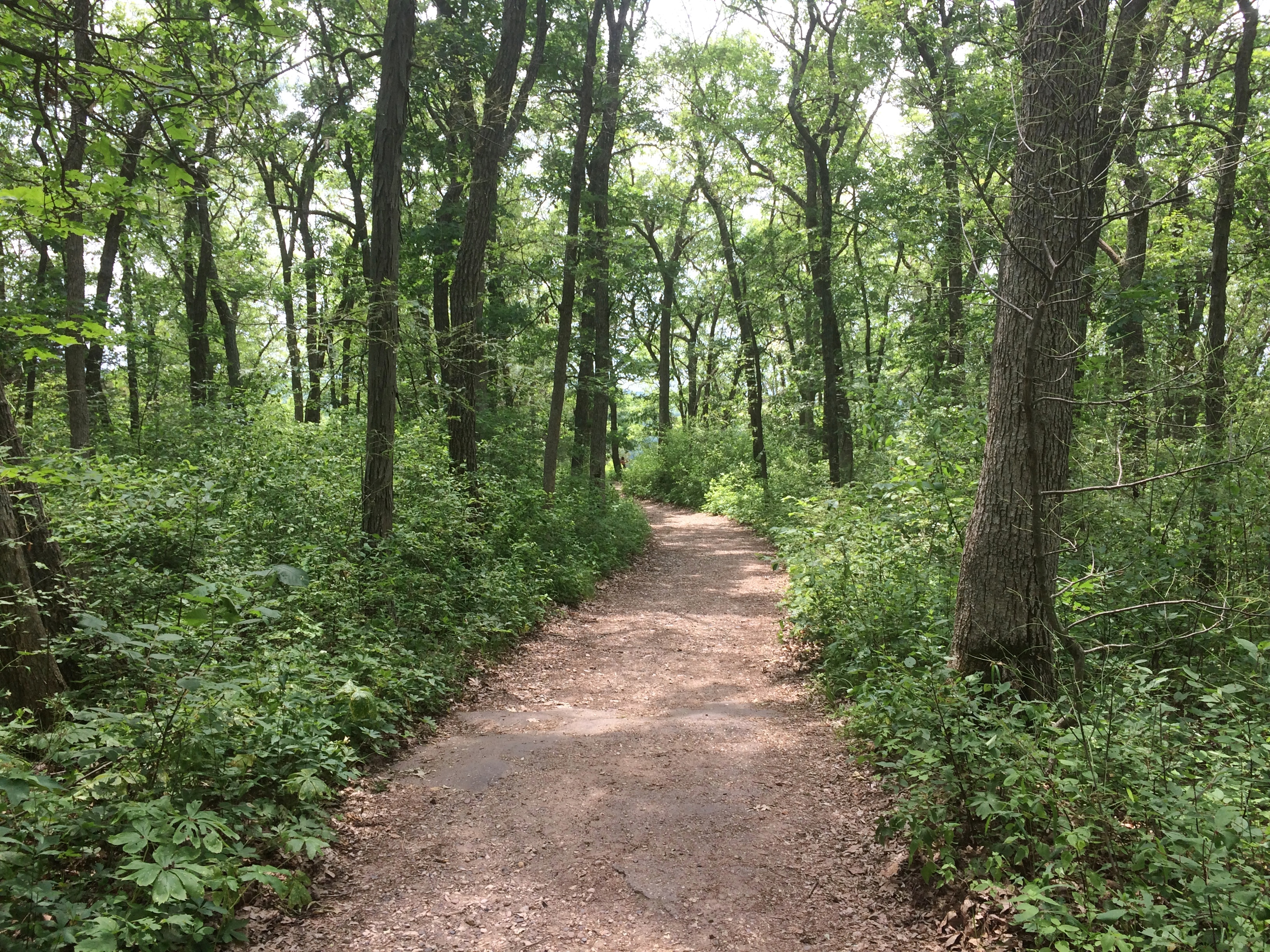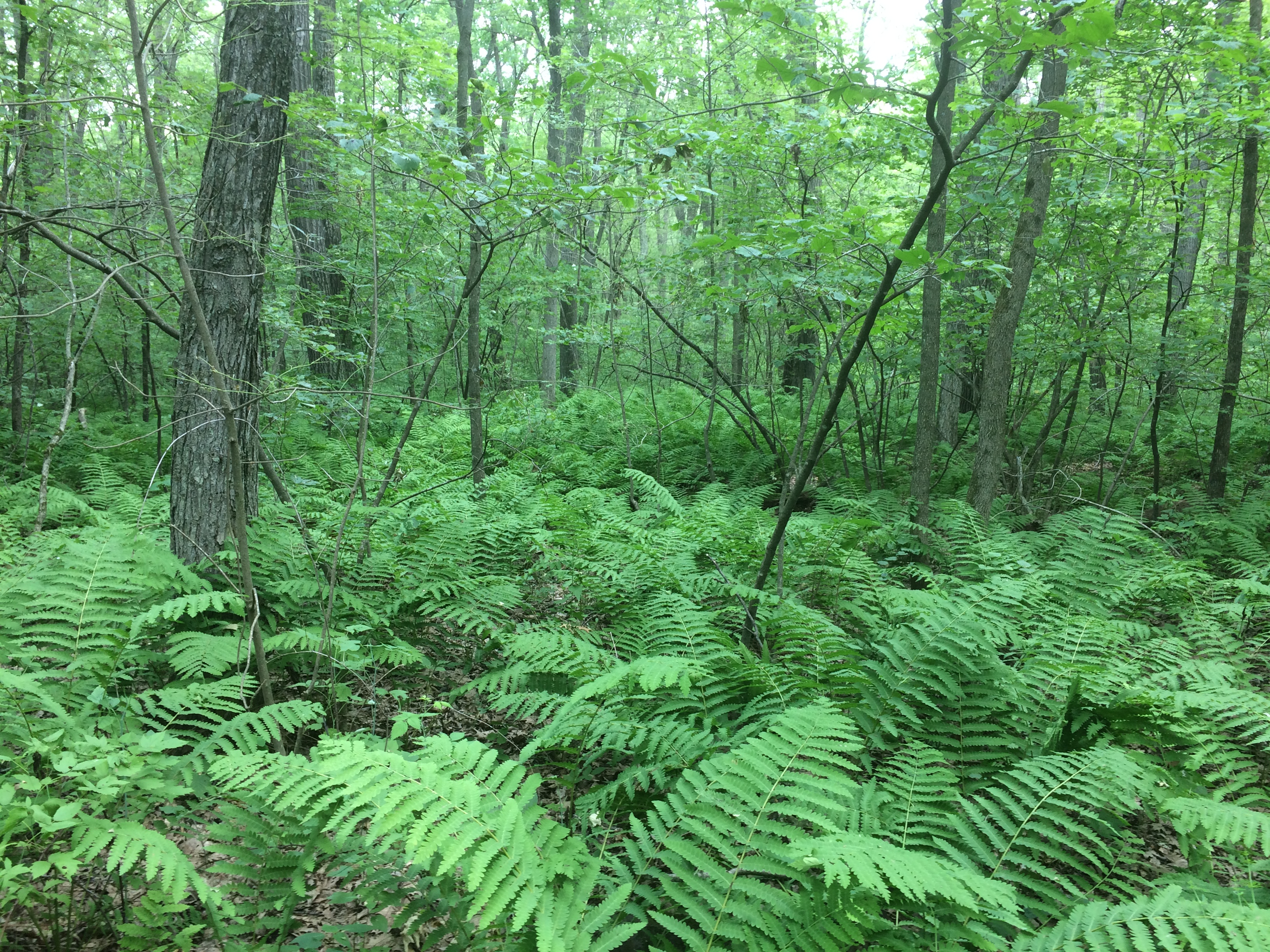On the morning of July 4, we left Prairie du Chien and drove a short distance to Wyalusing State Park, a thickly wooded Wisconsin property at the confluence of the Wisconsin and Mississippi rivers.
The first order of business at the park: a drive to a place called Henneger Point at the end of the winding and not-too-wide Cathedral Tree Drive. A fitting name, with massive maples and other trees towering over the road.
Before getting to the point, you arrive at the Spook Hill Group of mounds, looking very much like the ones across the Mississippi at Effigy Mounds NM, and more distinct in person than via photograph.
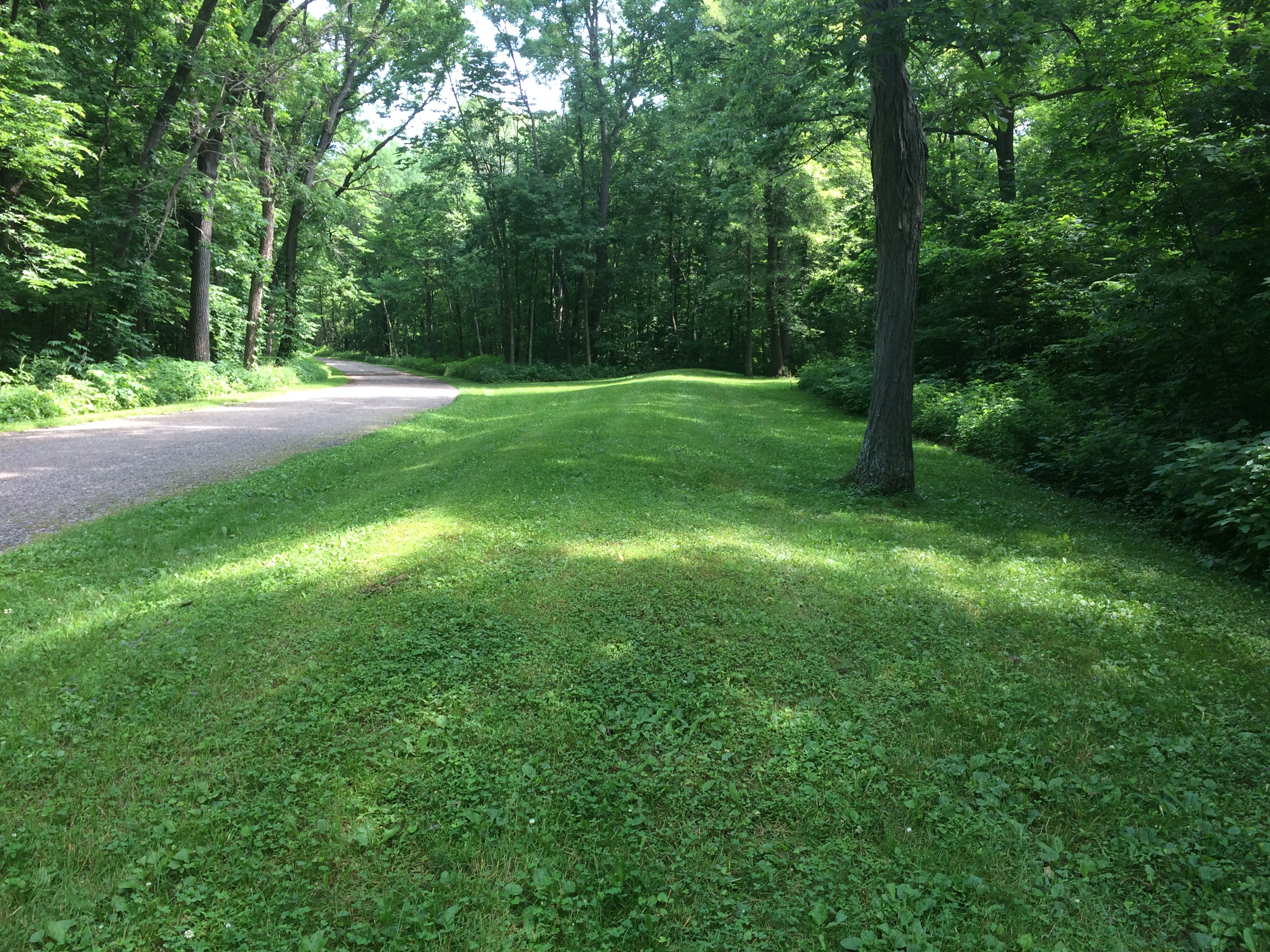 Henneger Point offered us a nice view of the river and Iowa across the way, behind a summer blaze of lilies.
Henneger Point offered us a nice view of the river and Iowa across the way, behind a summer blaze of lilies.
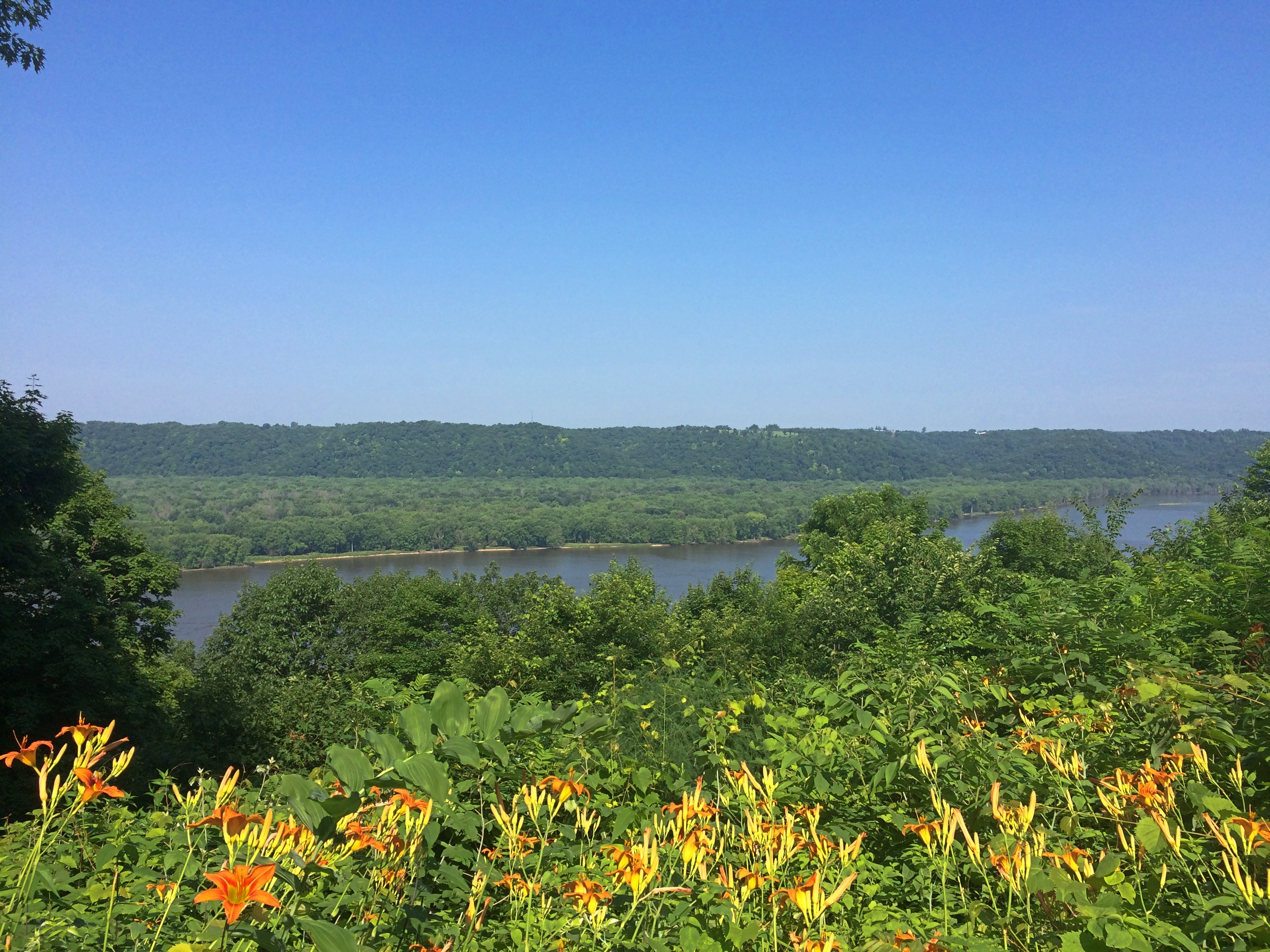 A picnic shelter stands close by. The sign on the shelter said it was closed, though I imagine enforcement is a mite spotty.
A picnic shelter stands close by. The sign on the shelter said it was closed, though I imagine enforcement is a mite spotty.
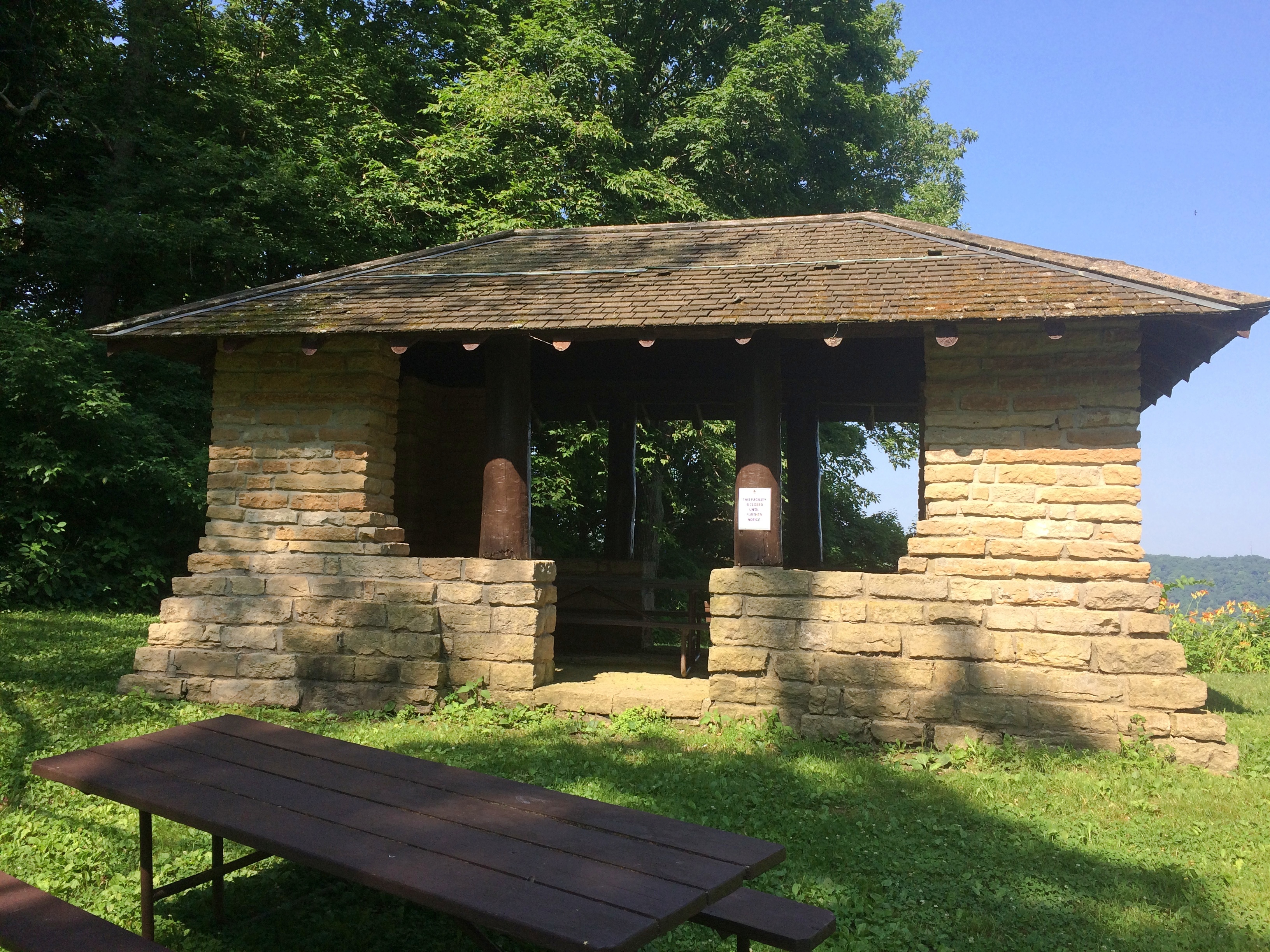 CCC. Has to be, at least originally. Later, I found out that CCC Camp Nelson Dewey #2672 existed in the park from 1935 to ’37. Men living there built park facilities and improved its roads and trails, so they probably did the shelter, though later in the day I noticed a Wisconsin Conservation Corps sign on a small bridge on a trail. That’s an existing nonprofit that does similar work as the CCC of old.
CCC. Has to be, at least originally. Later, I found out that CCC Camp Nelson Dewey #2672 existed in the park from 1935 to ’37. Men living there built park facilities and improved its roads and trails, so they probably did the shelter, though later in the day I noticed a Wisconsin Conservation Corps sign on a small bridge on a trail. That’s an existing nonprofit that does similar work as the CCC of old.
We walked a half mile or so along the wide Mississippi Ridge Trail, one of whose trail heads is at Henneger Point.
 In theory it’s suitable for bicycles, but we were absolutely the only ones on it. Talk about social distancing.
In theory it’s suitable for bicycles, but we were absolutely the only ones on it. Talk about social distancing.
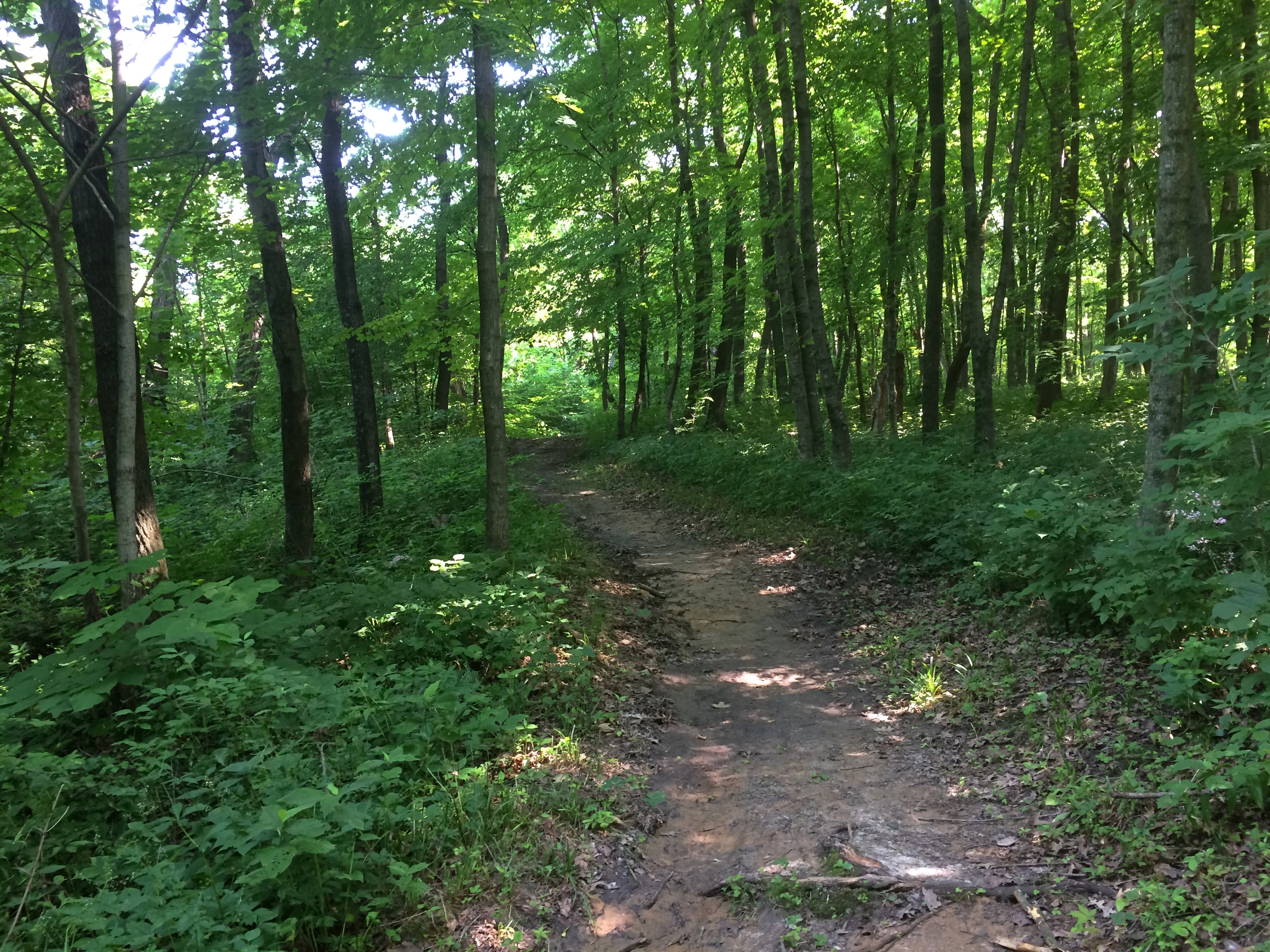 Later, we drove to the trail head of Sugar Maple Trail and did its 1.5-mile loop. The map didn’t warn us how steep it would be, though if I’d thought about it, I would have figured it out, since the trail loops down to near the river.
Later, we drove to the trail head of Sugar Maple Trail and did its 1.5-mile loop. The map didn’t warn us how steep it would be, though if I’d thought about it, I would have figured it out, since the trail loops down to near the river.
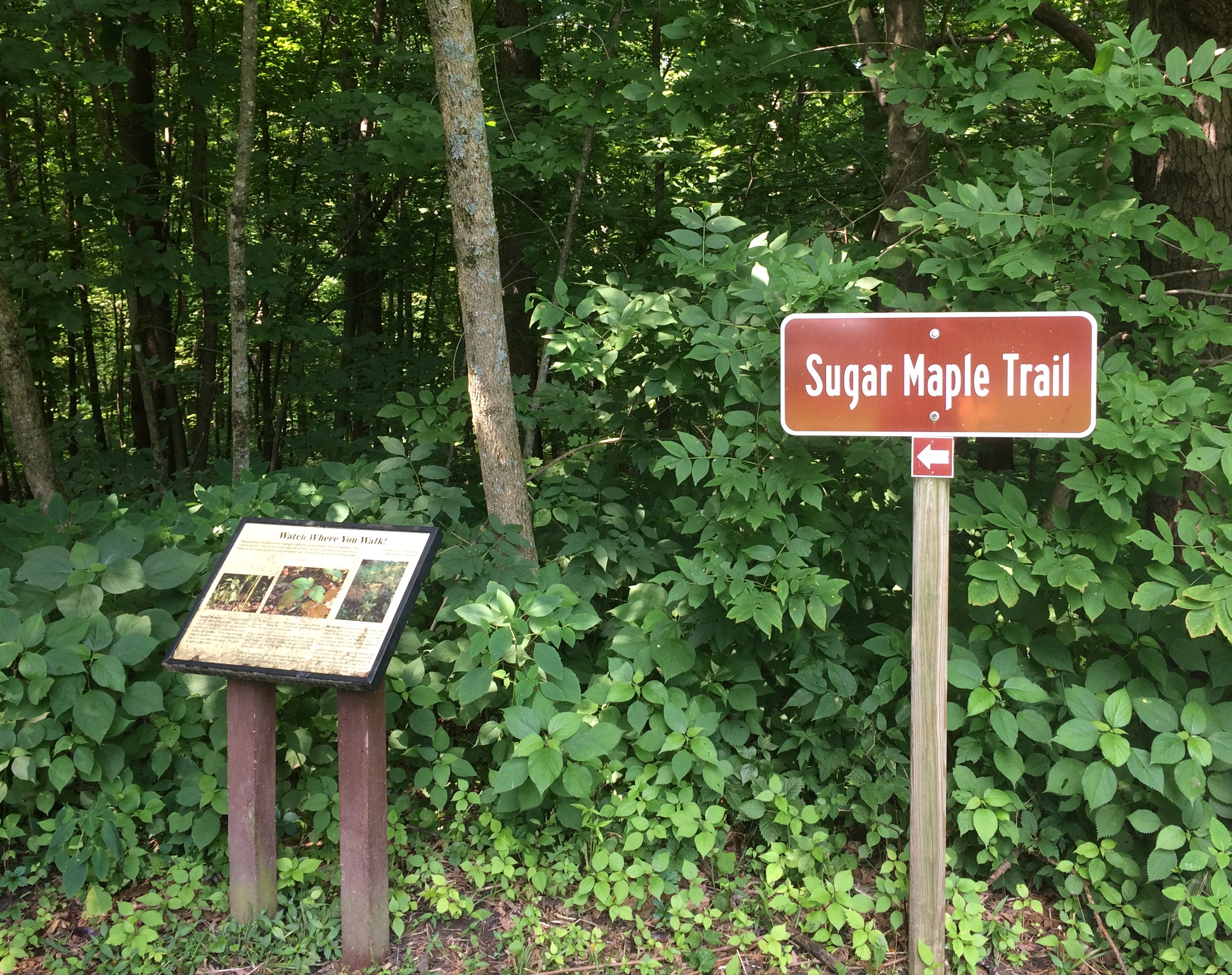
Only slightly down at first.
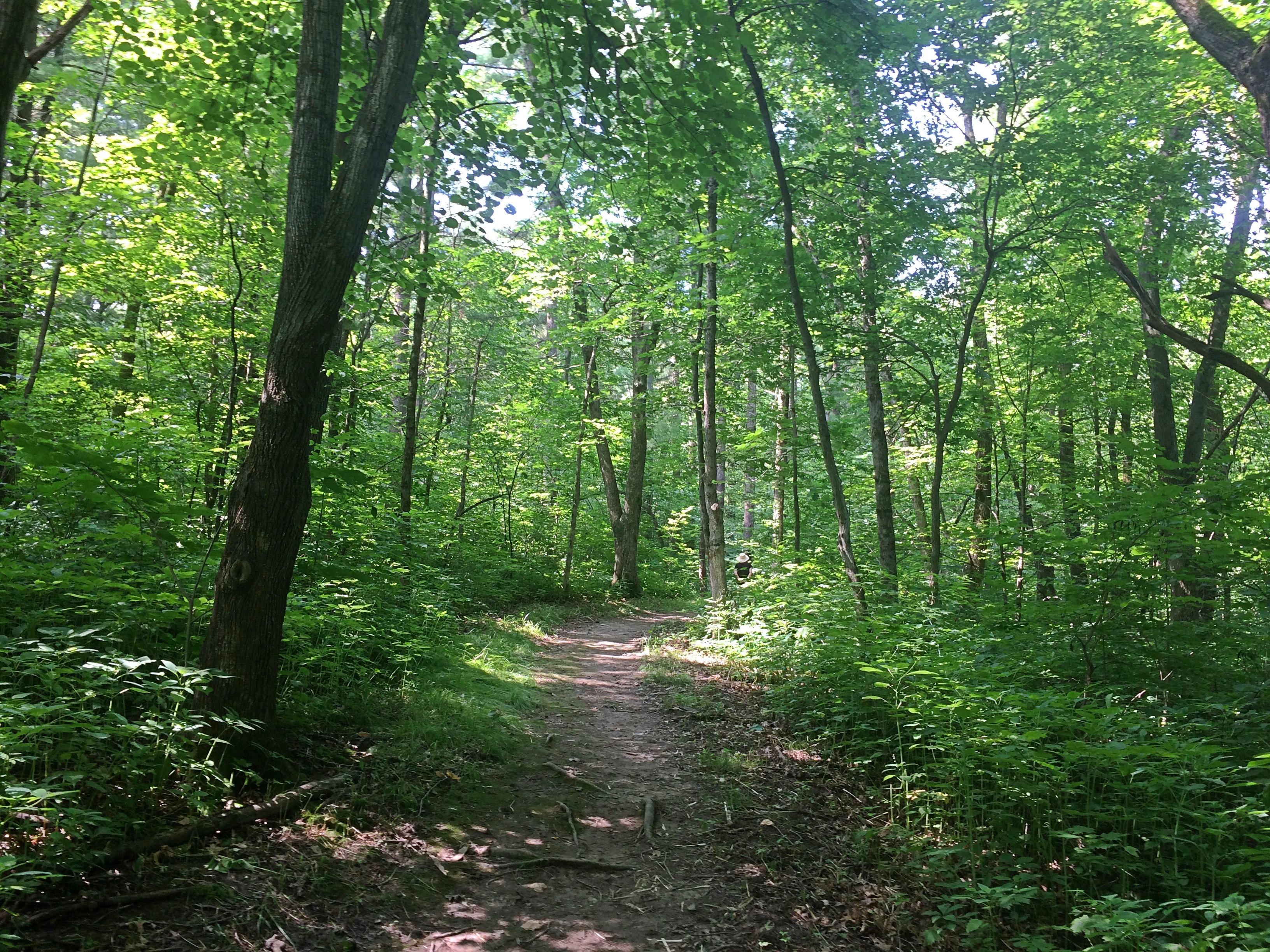
Then much further down, along the edge of a ravine cut by a creek-tributary of the Mississippi.
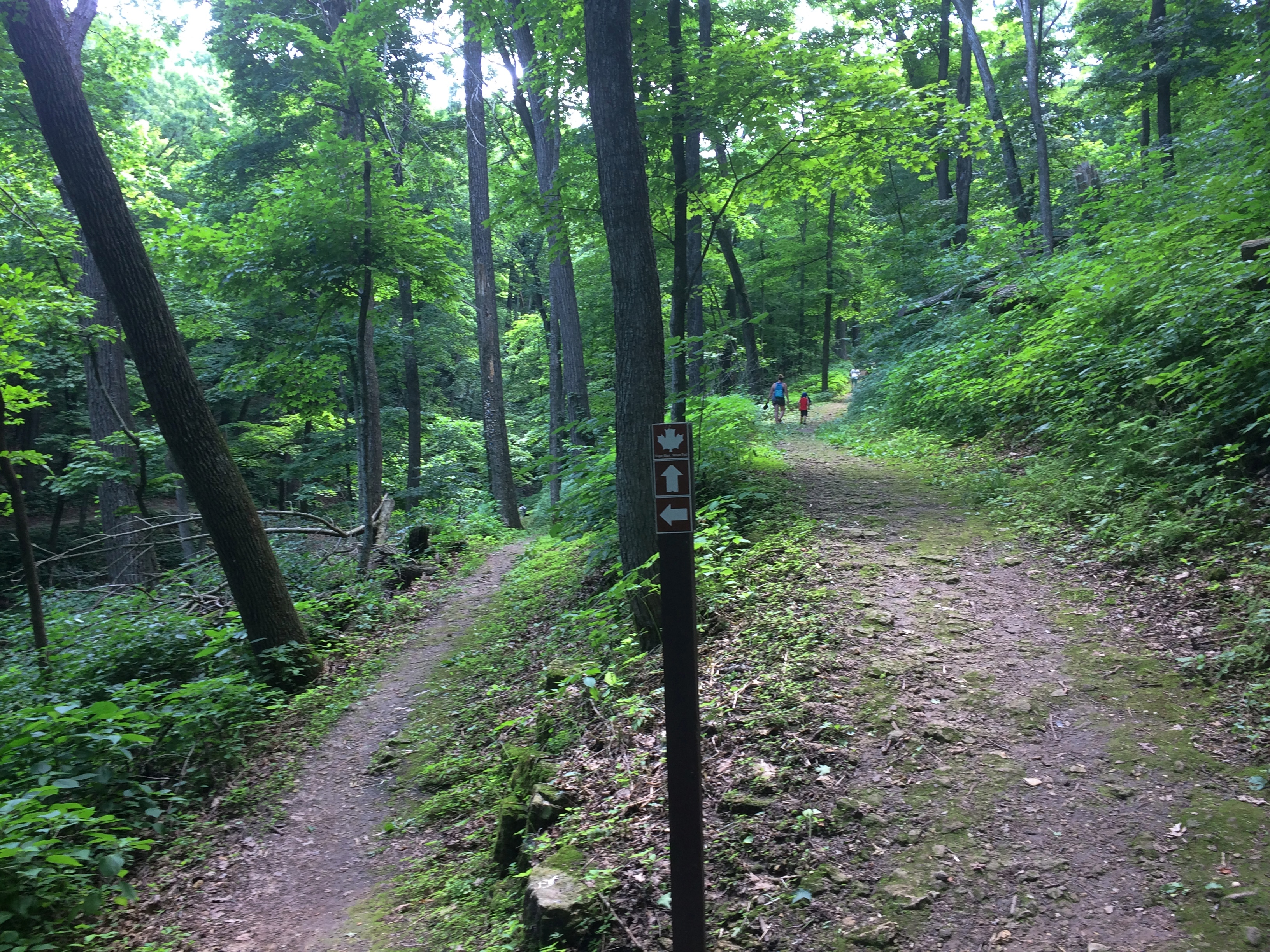
Going down wasn’t so bad, but I knew that meant we’d have to go back up. So we did.
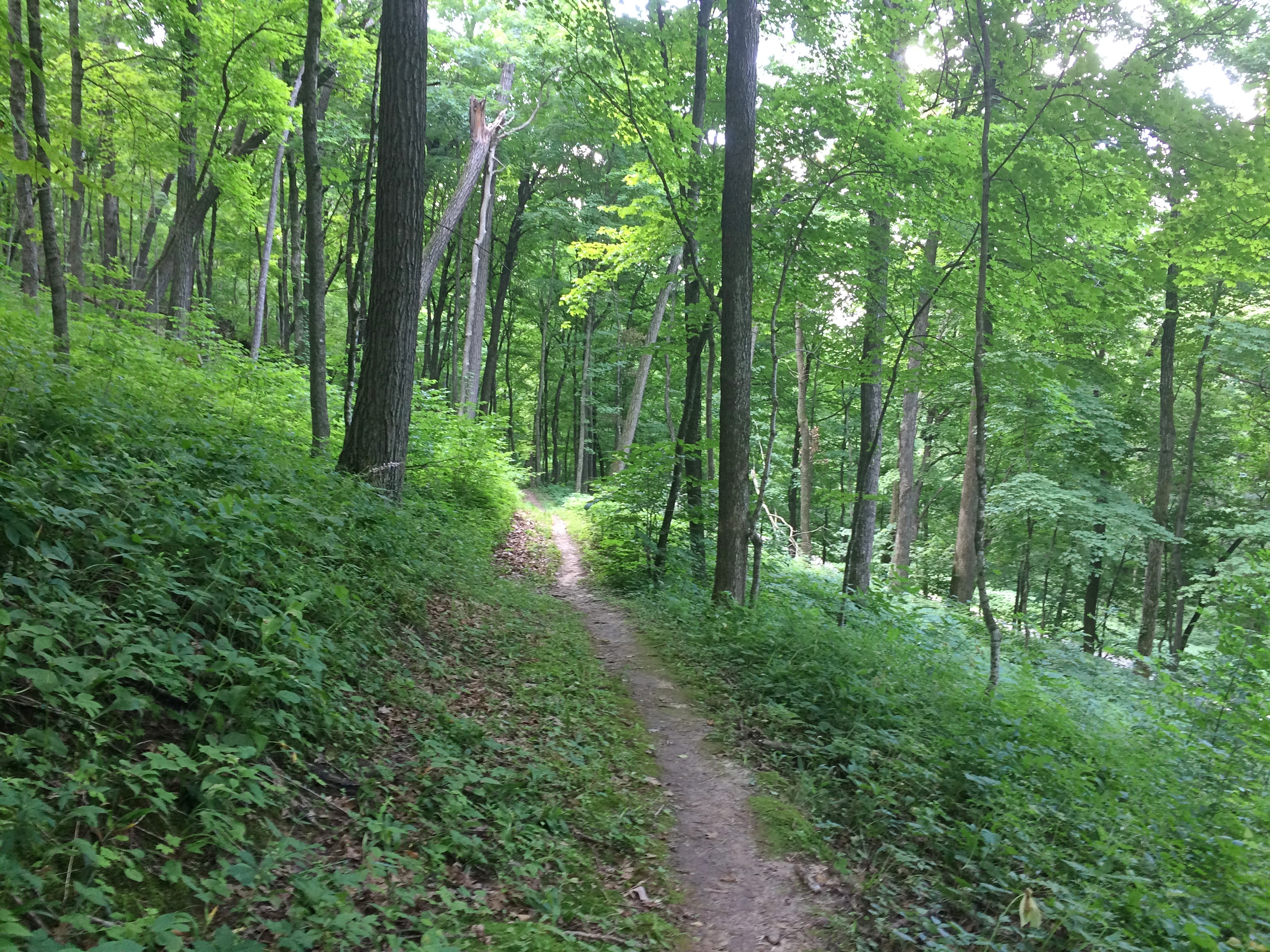
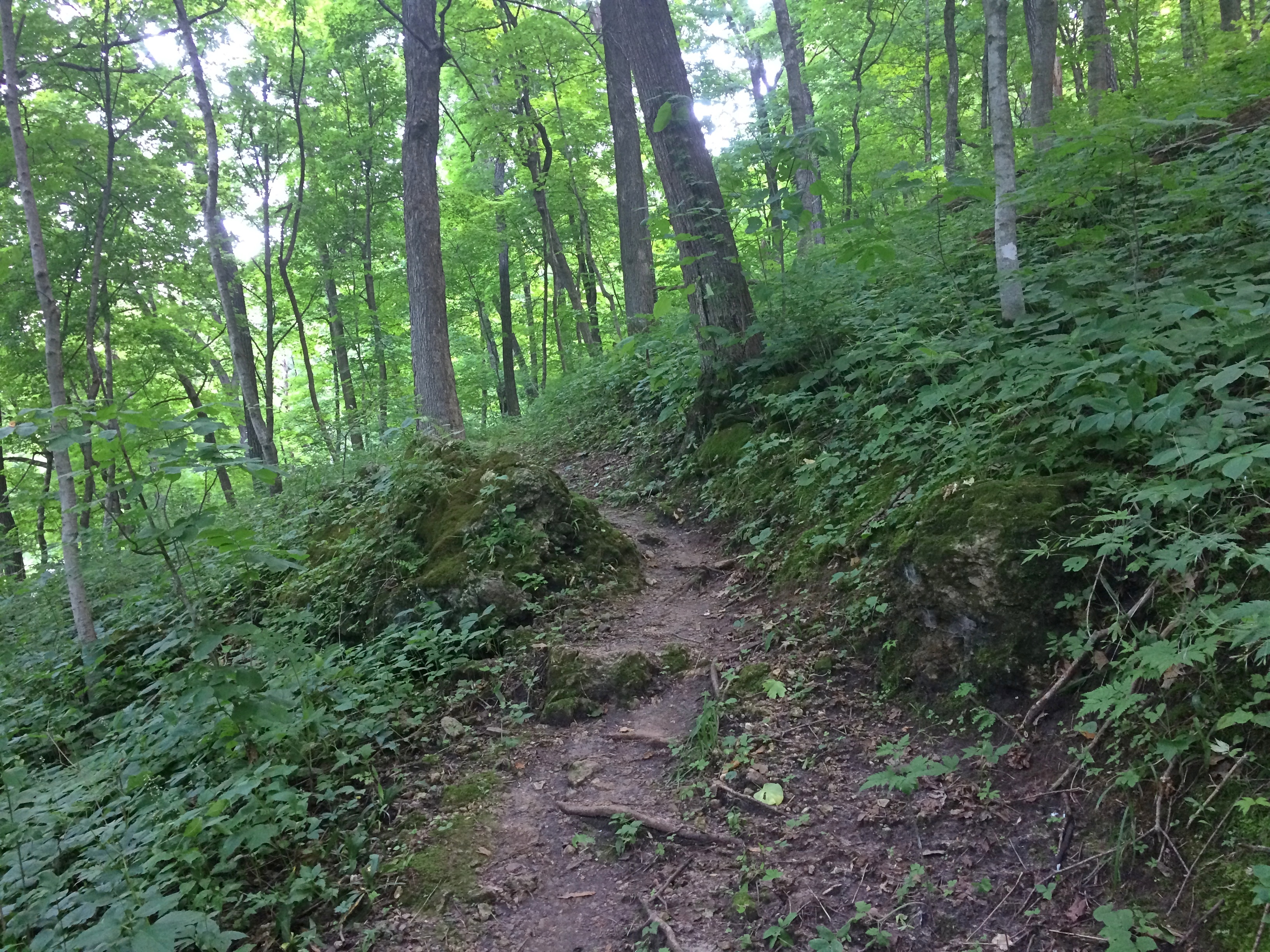
Tiring, but not as tiring as the day before at Effigy Mounds, even though I believe the change in elevation and the ambient temperature were about the same. Steep and hot, respectively.
At one point along the cascading creek near the trail is a waterfall. Above the waterfall was a nice place to sit.
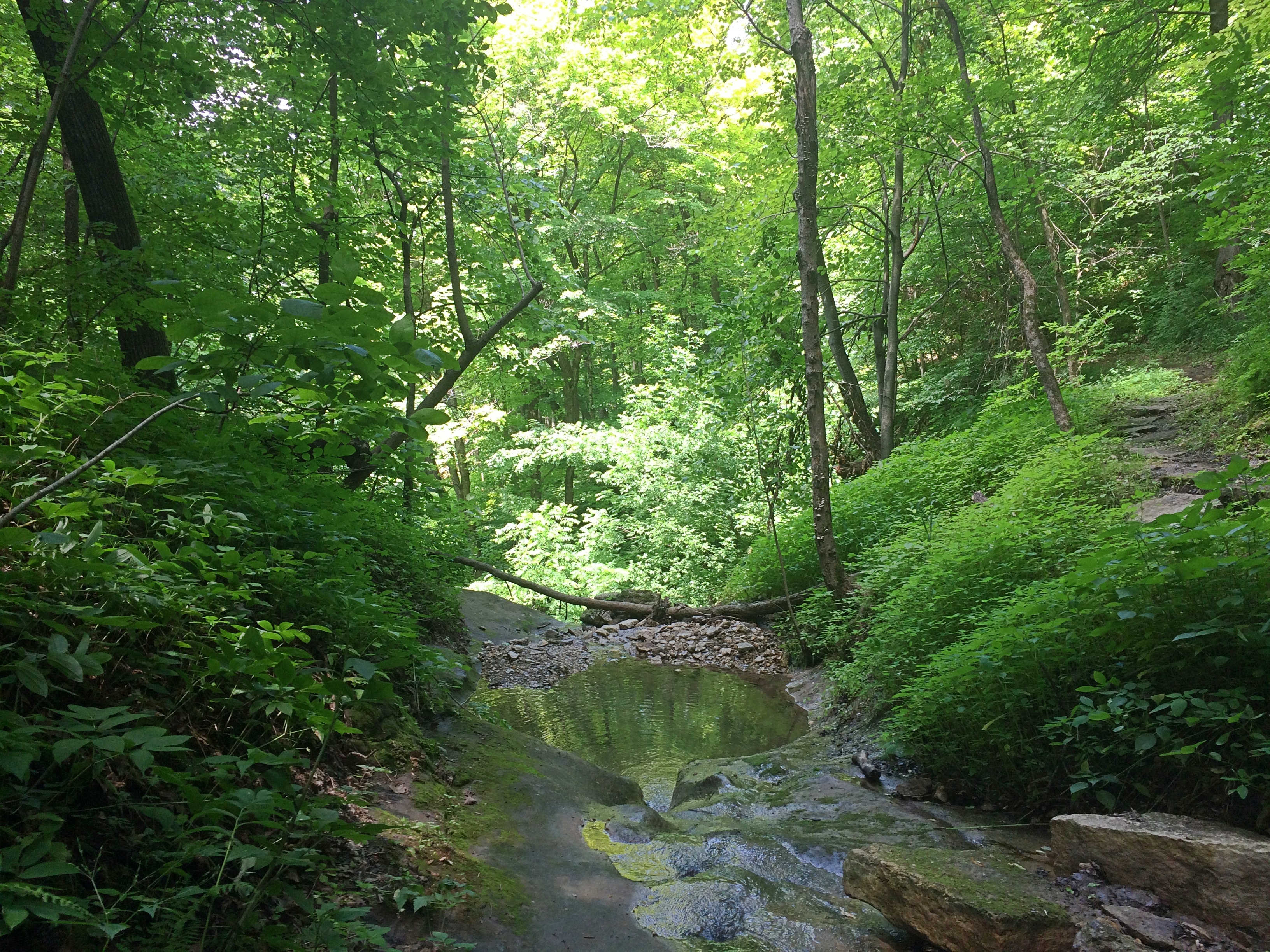 Elsewhere in the park is a memorial to the passenger pigeon, but I didn’t have the energy to seek it out after our long morning hike. Another time, perhaps. Until then, here’s Aldo Leopold on the passenger pigeon.
Elsewhere in the park is a memorial to the passenger pigeon, but I didn’t have the energy to seek it out after our long morning hike. Another time, perhaps. Until then, here’s Aldo Leopold on the passenger pigeon.
